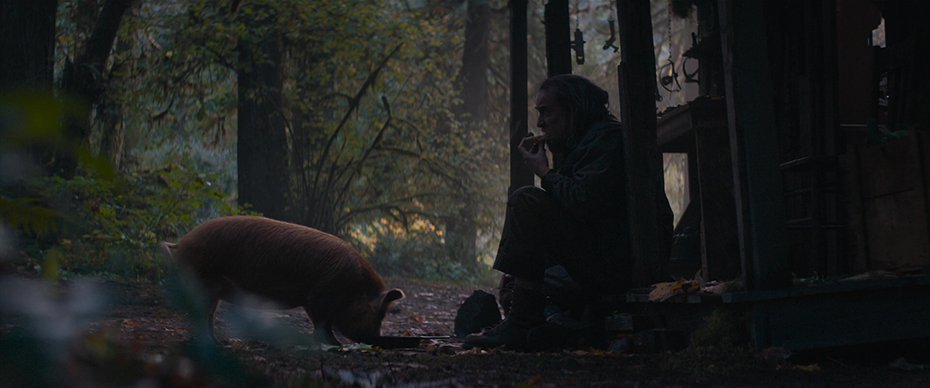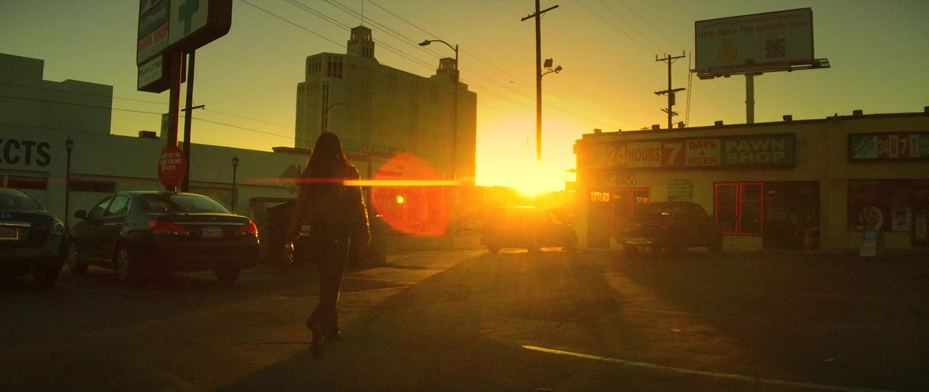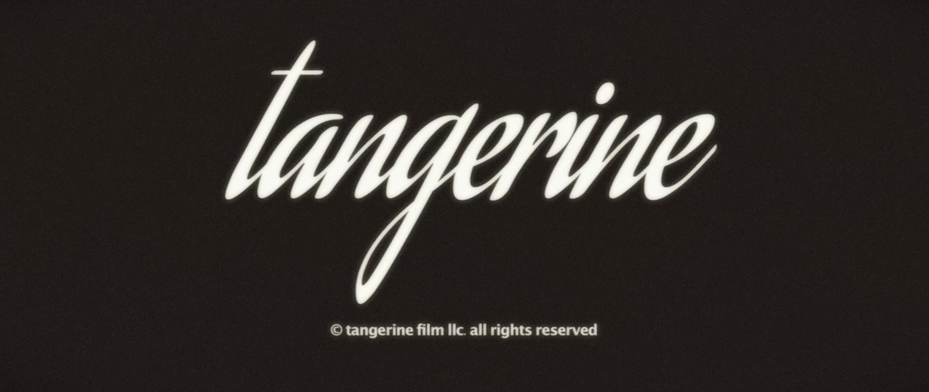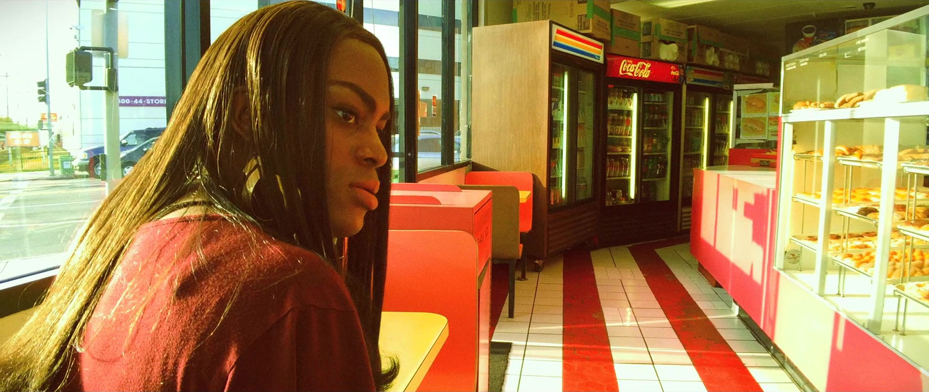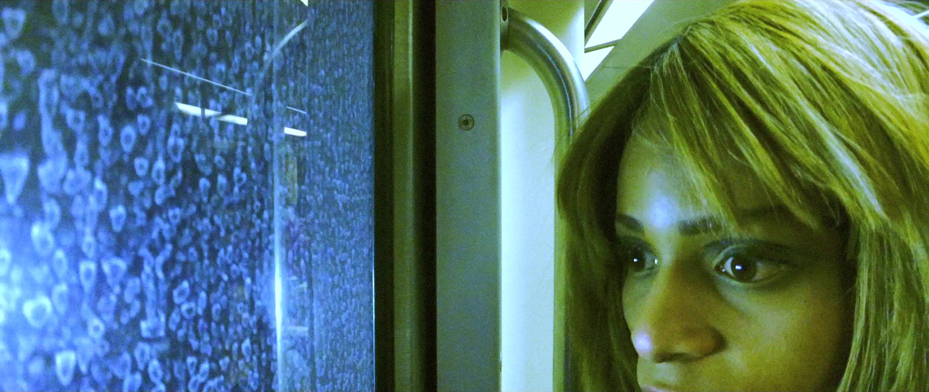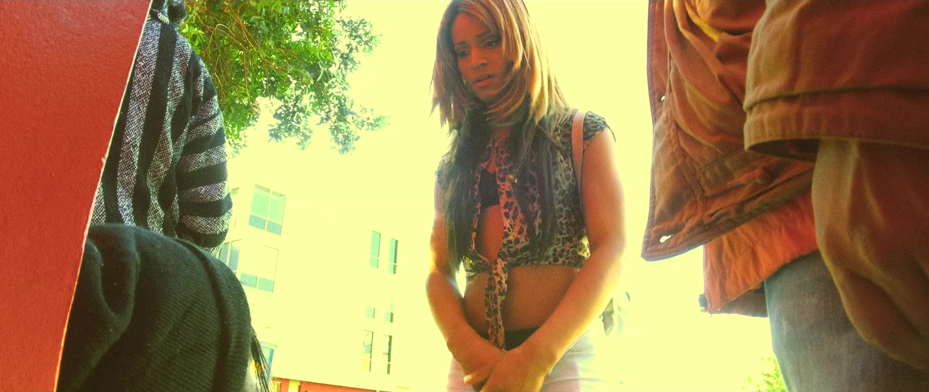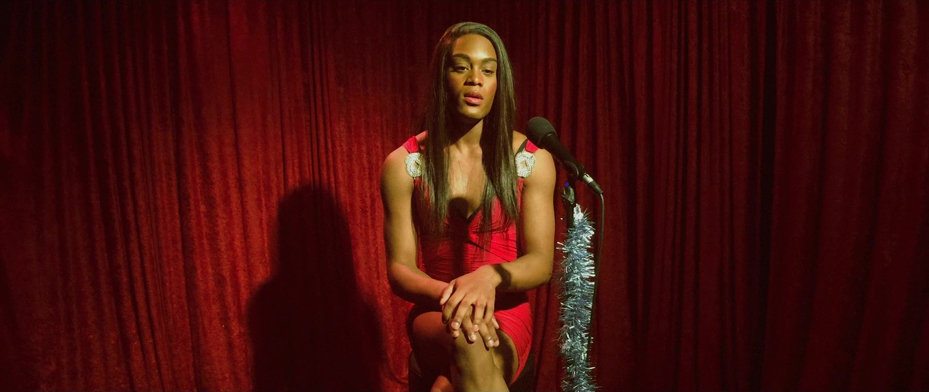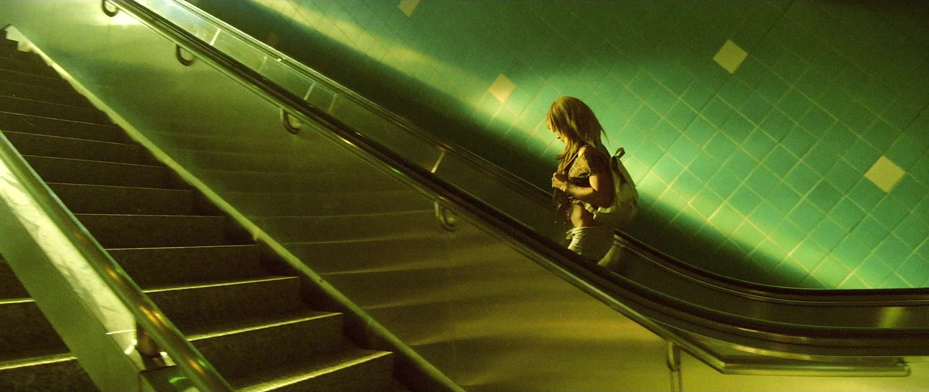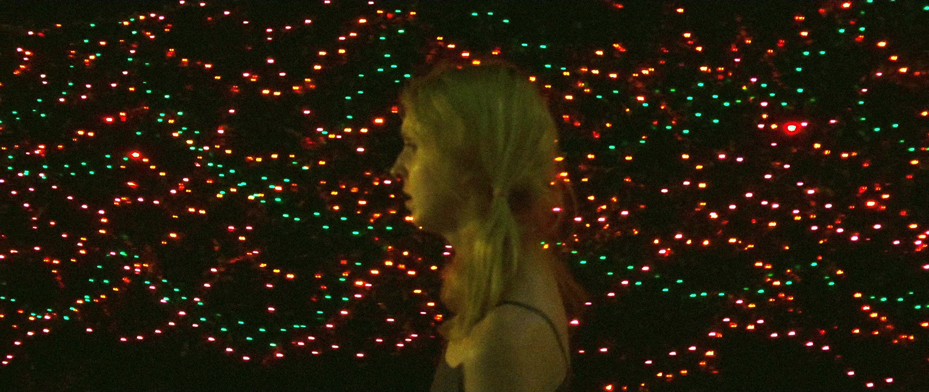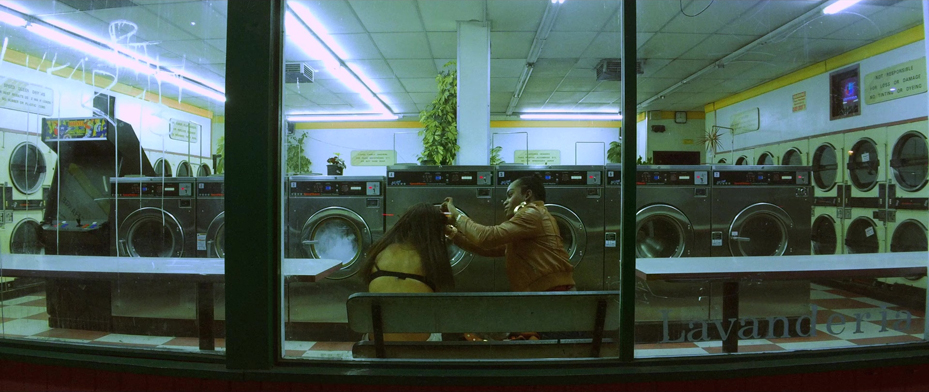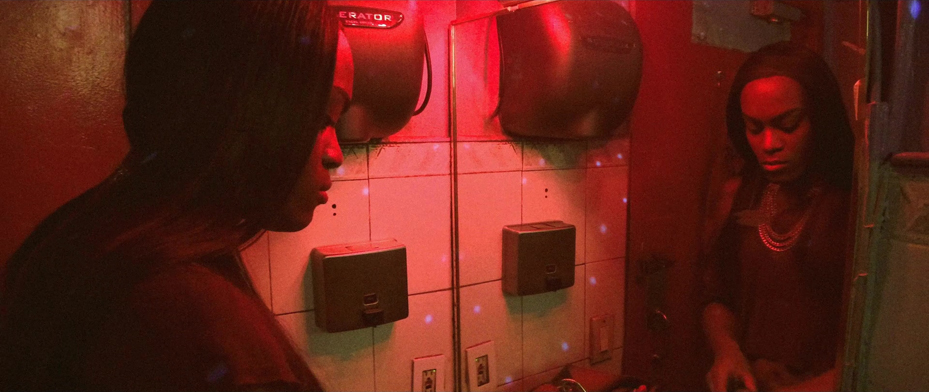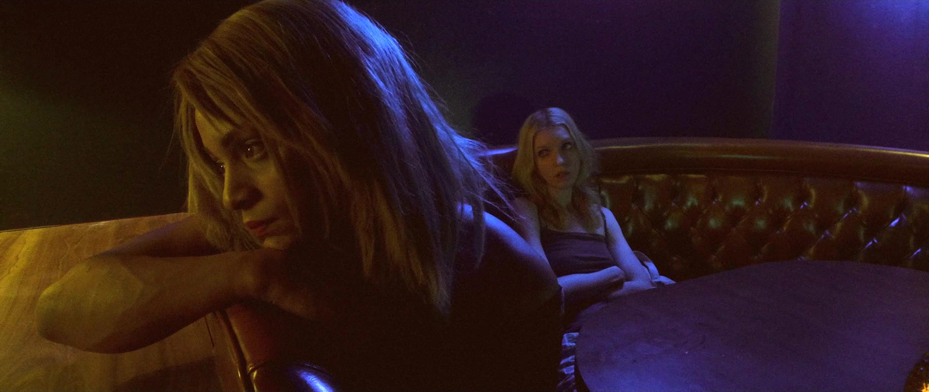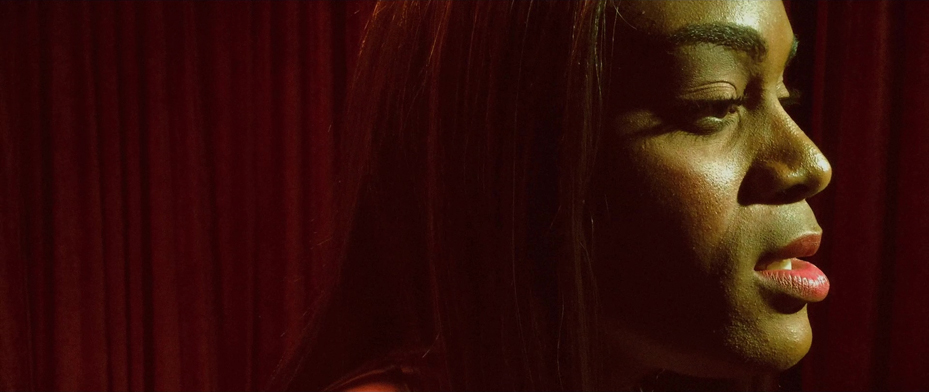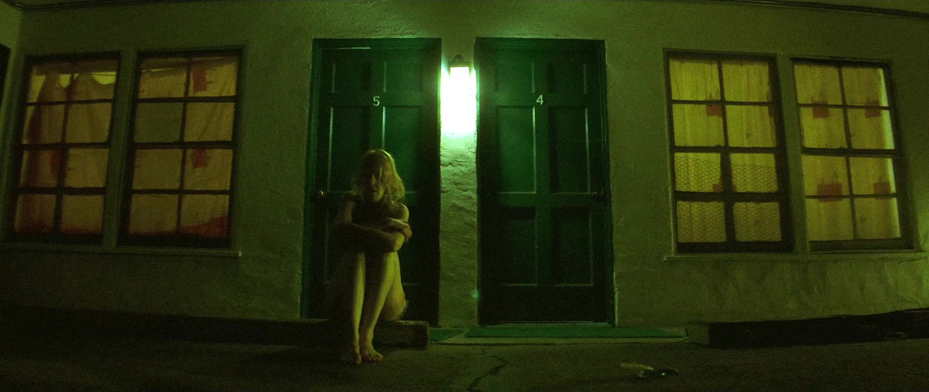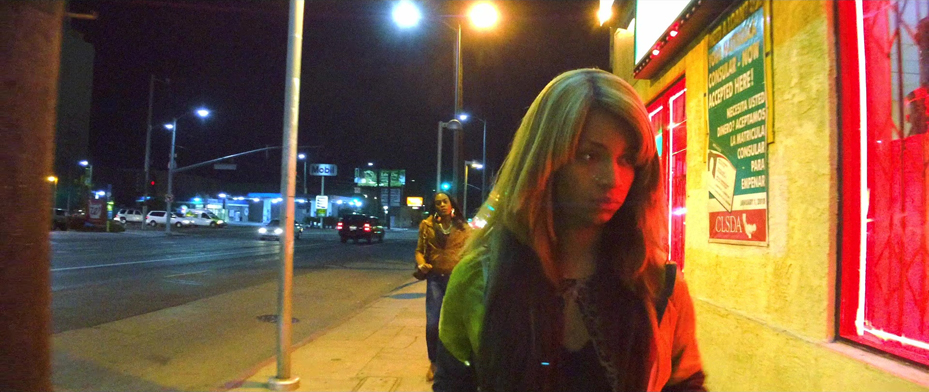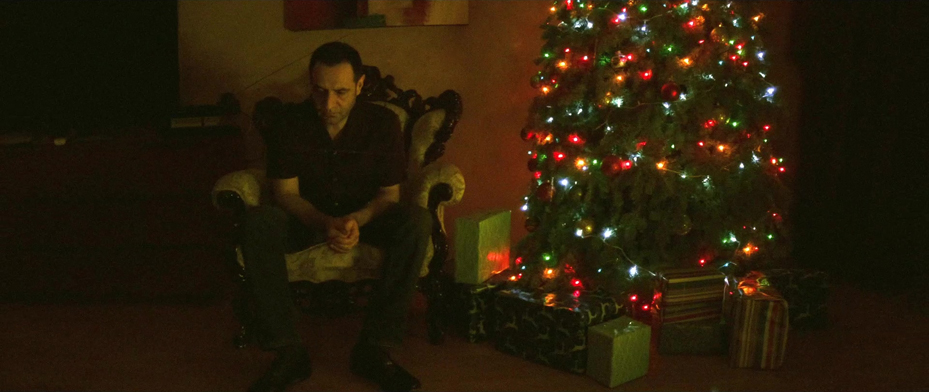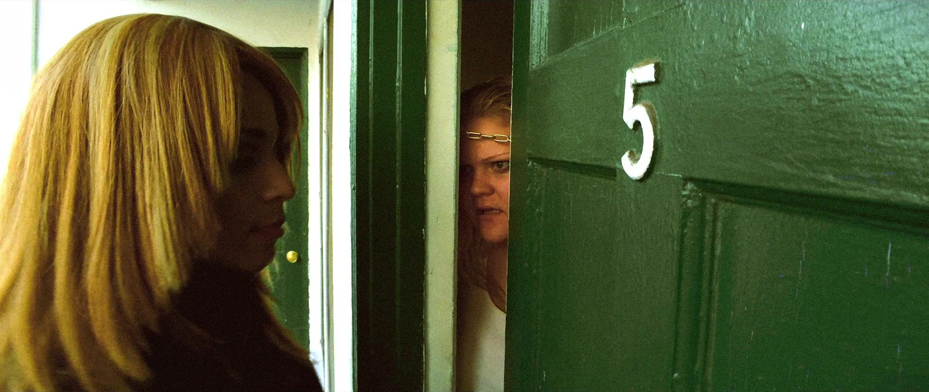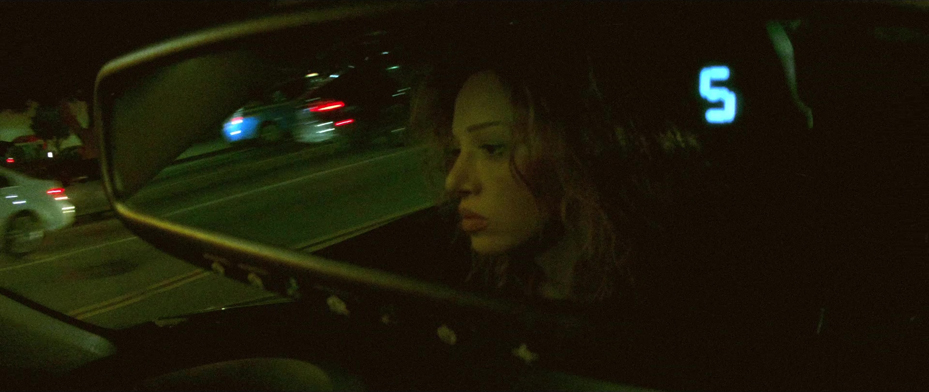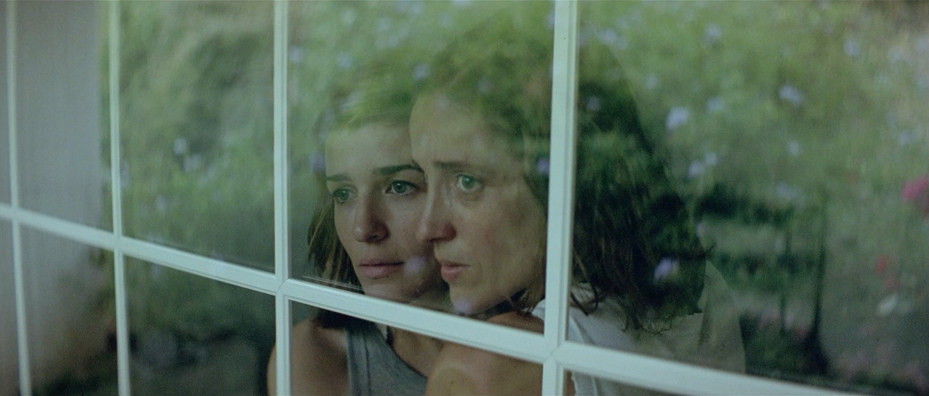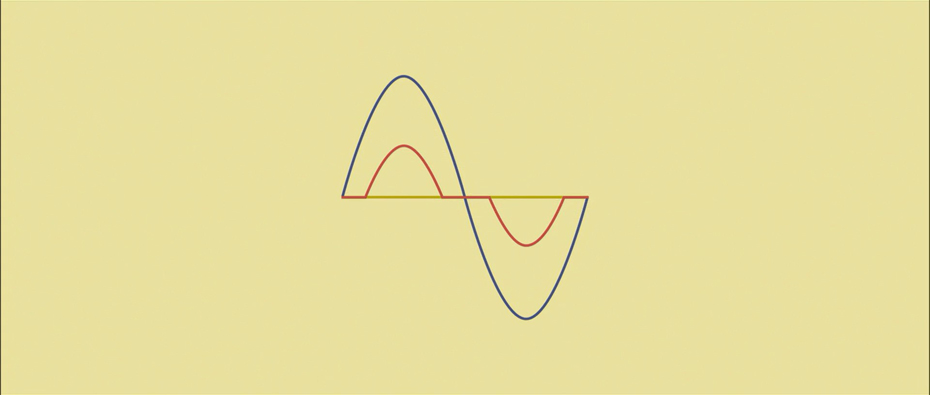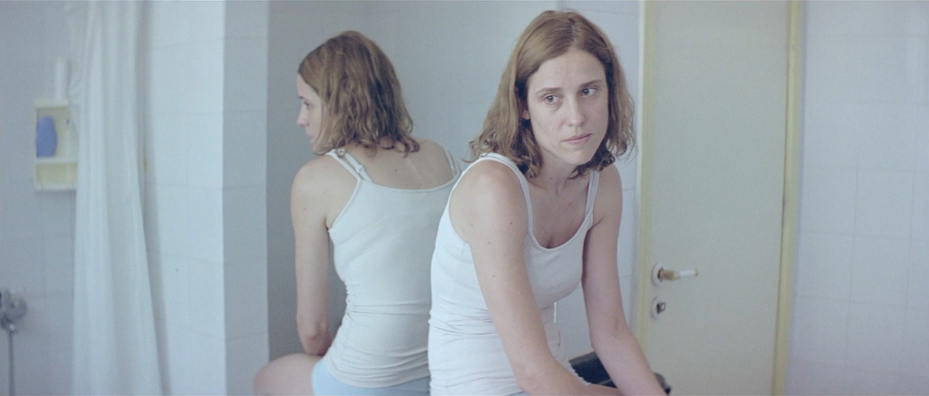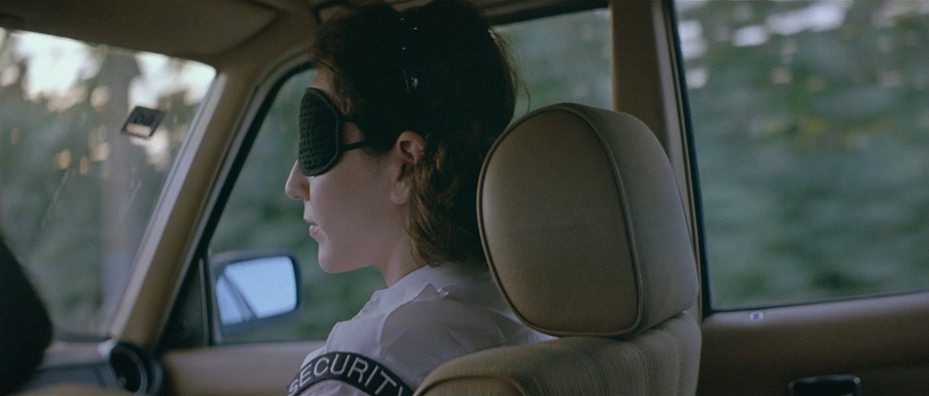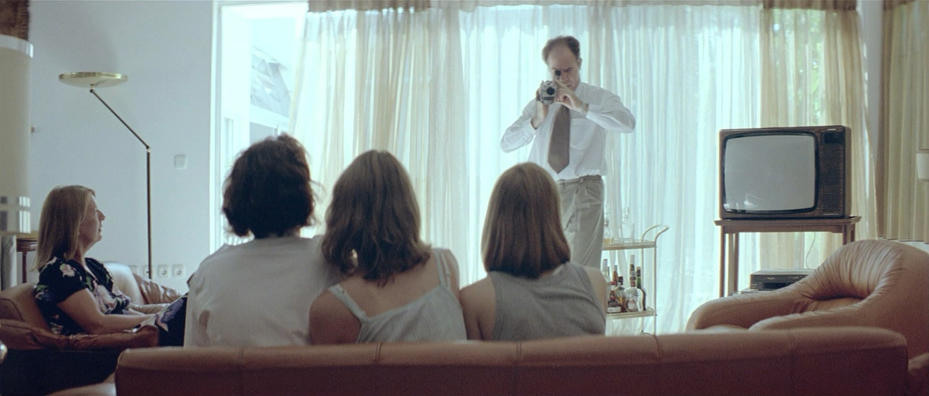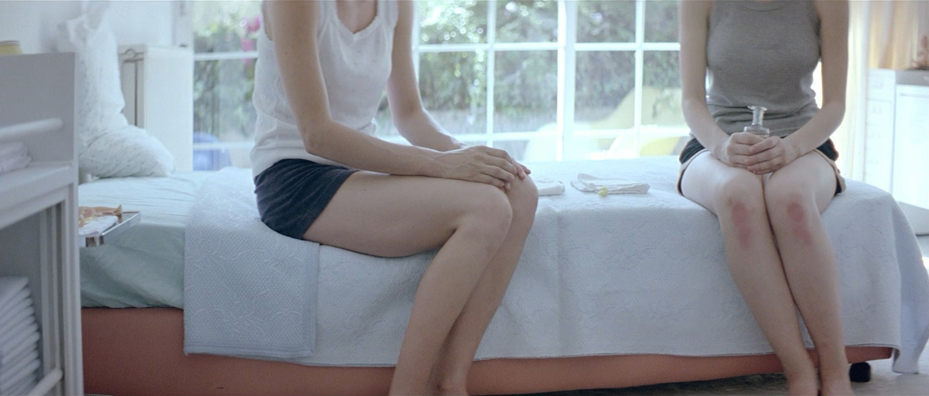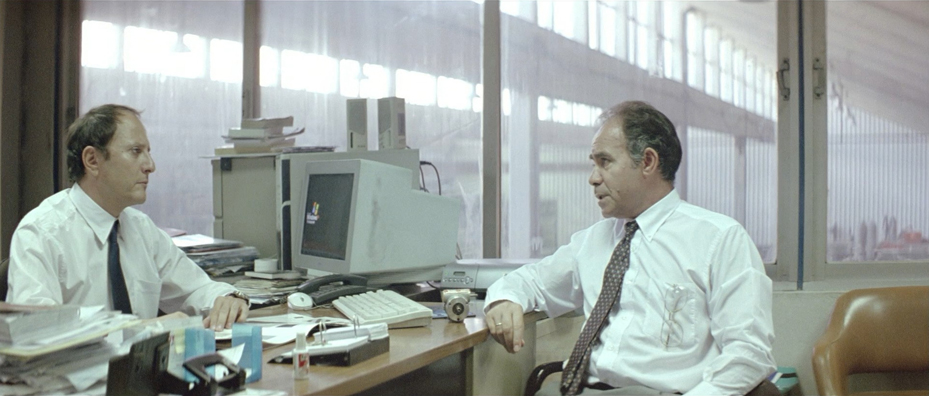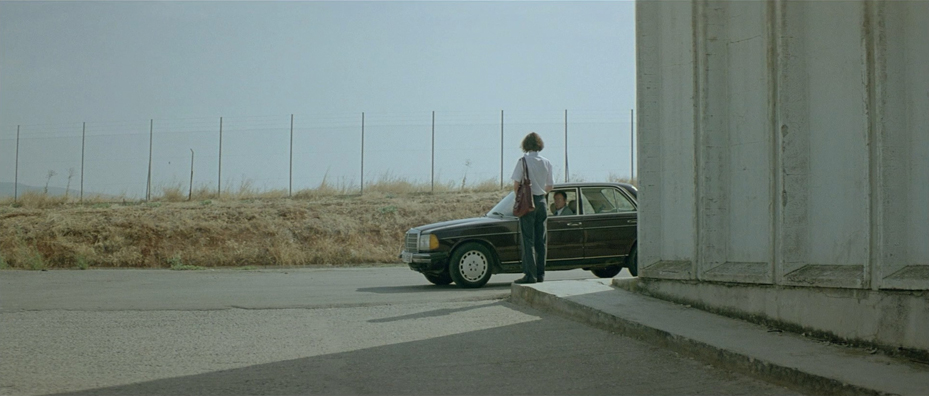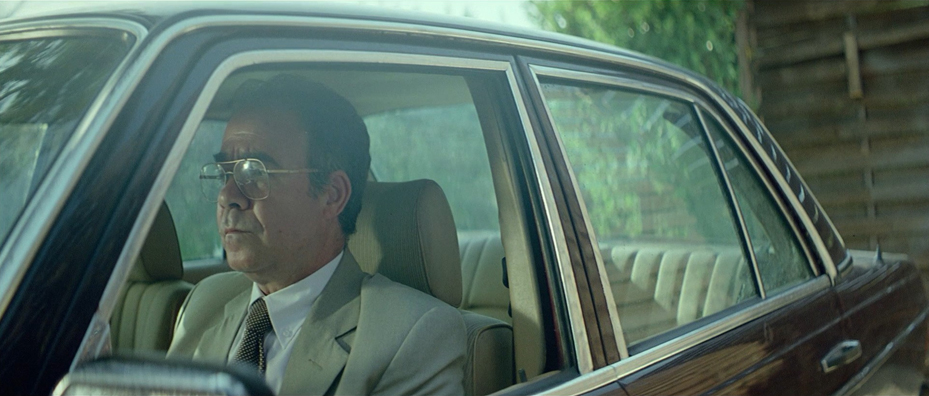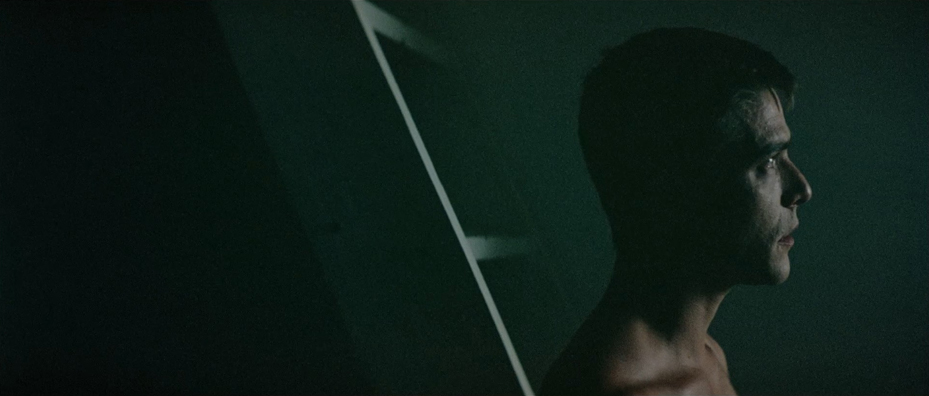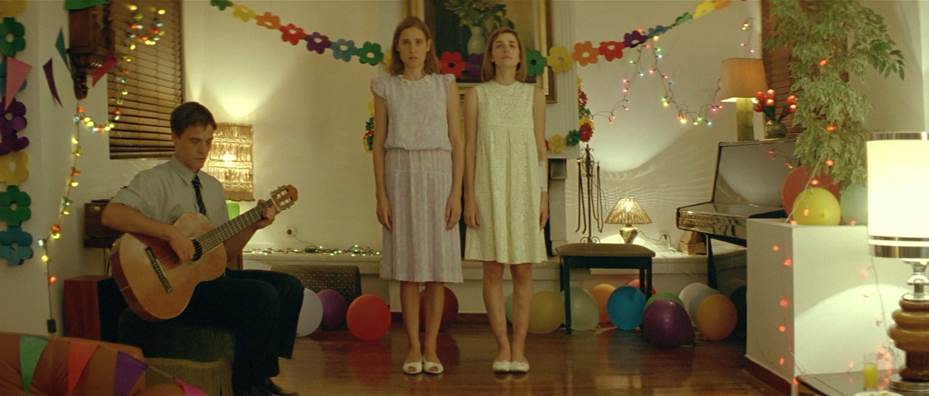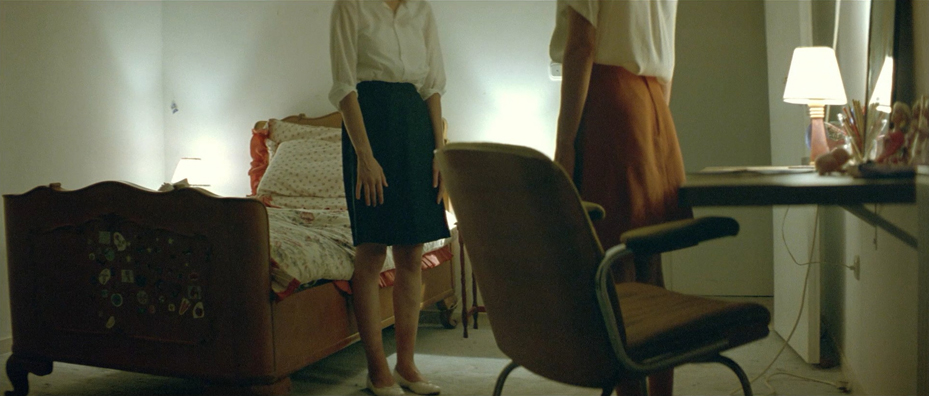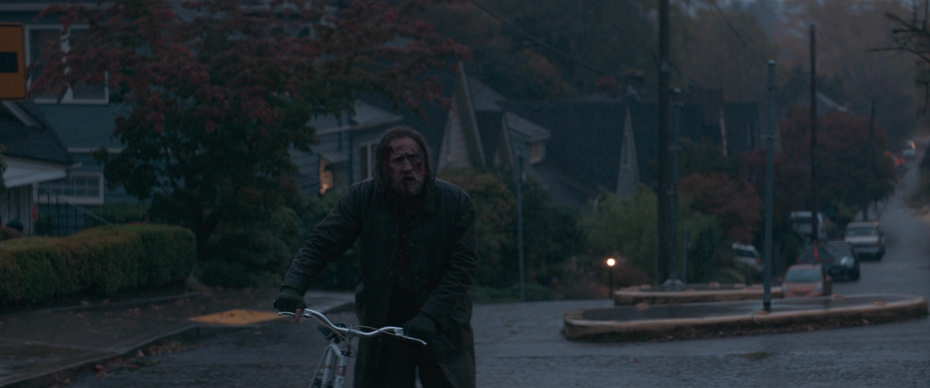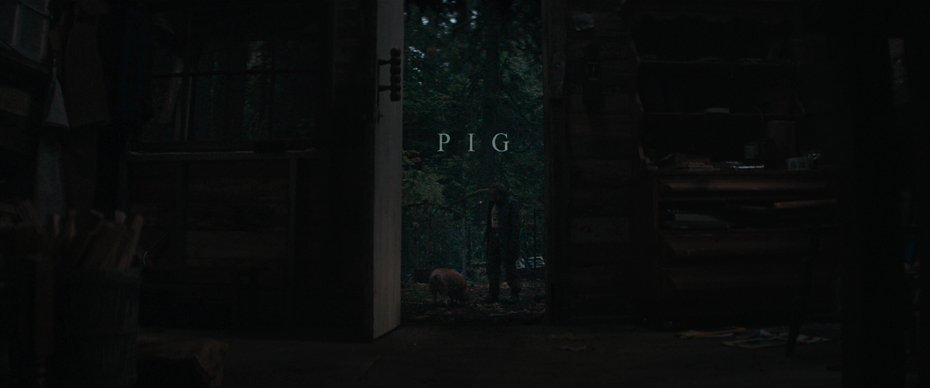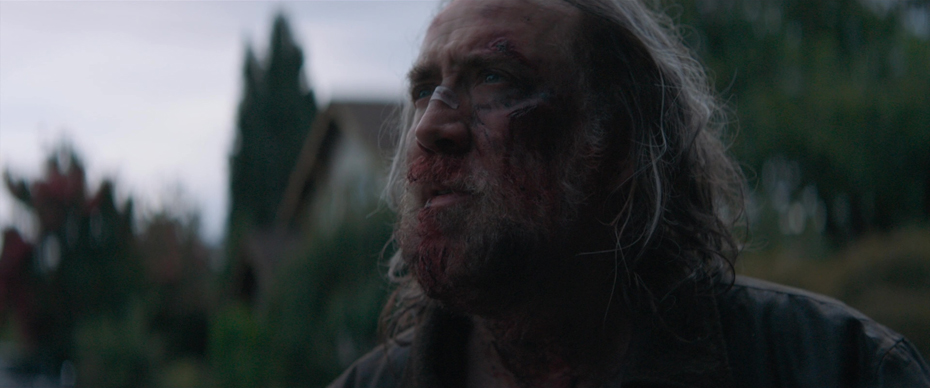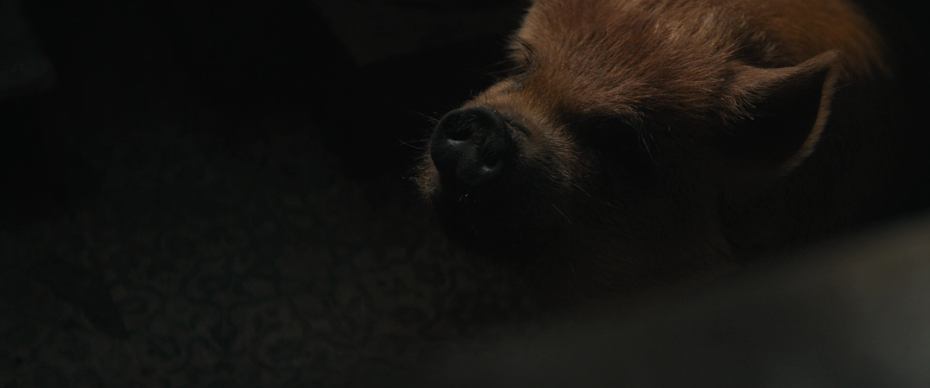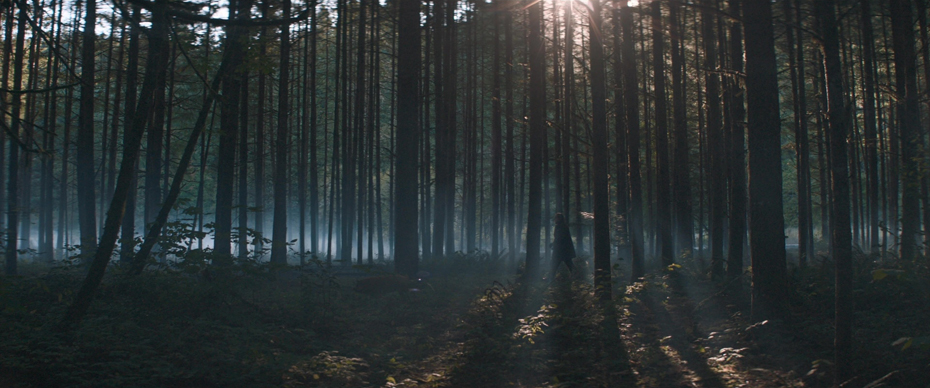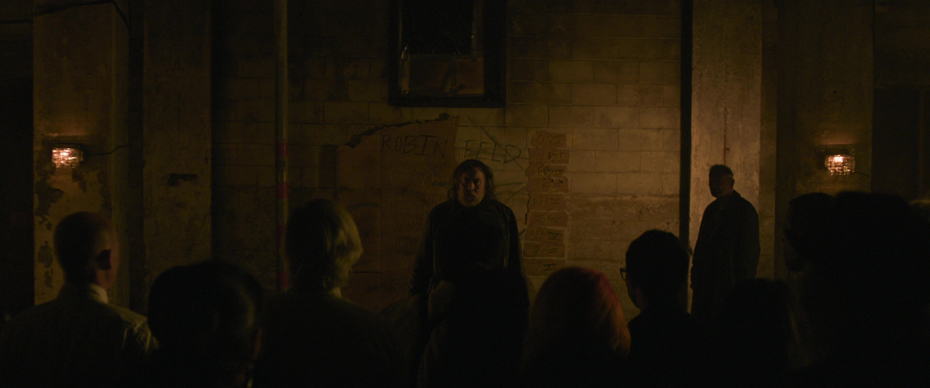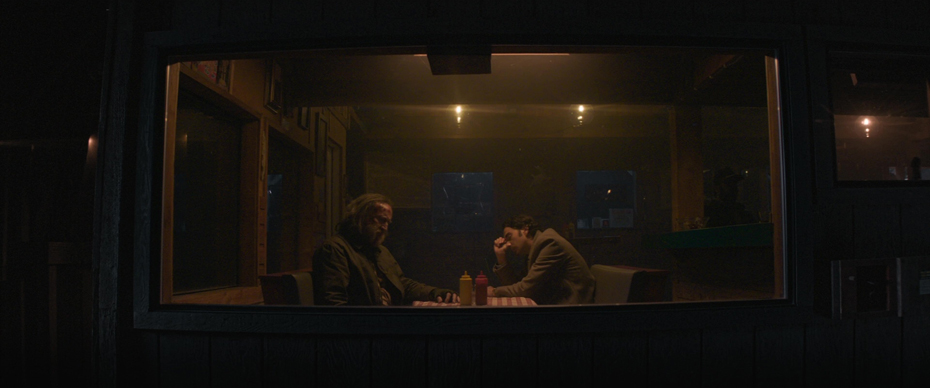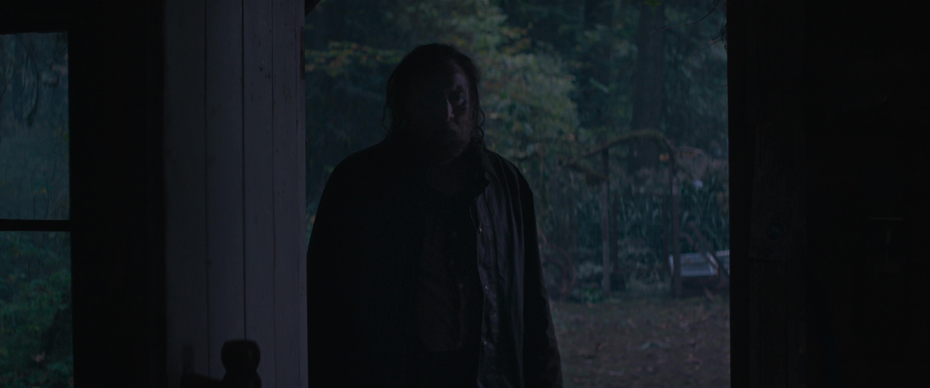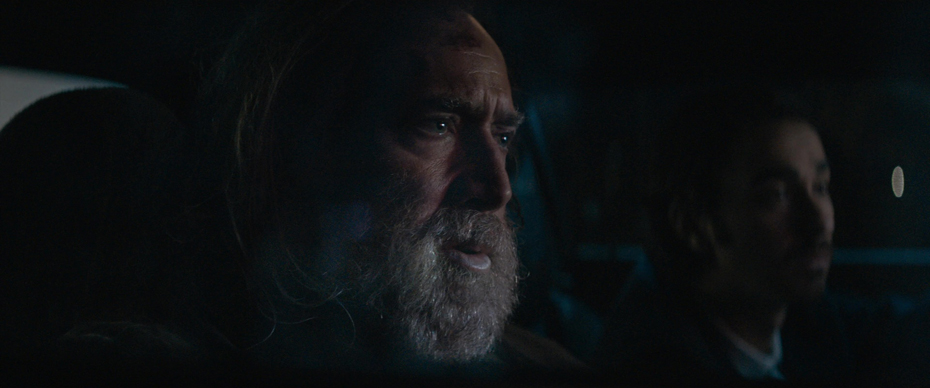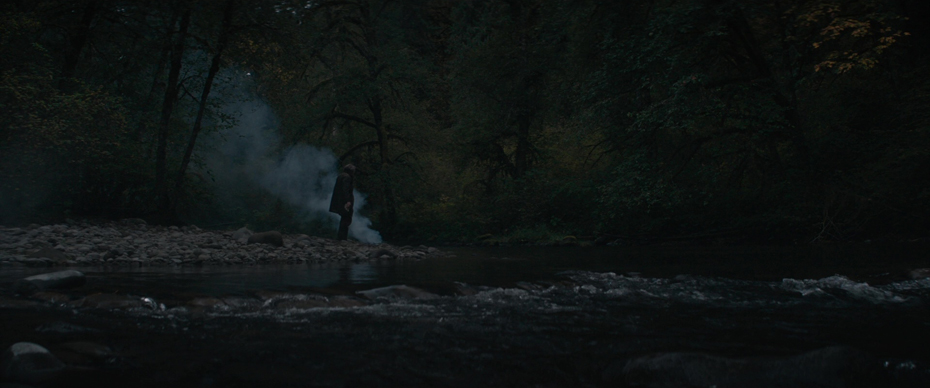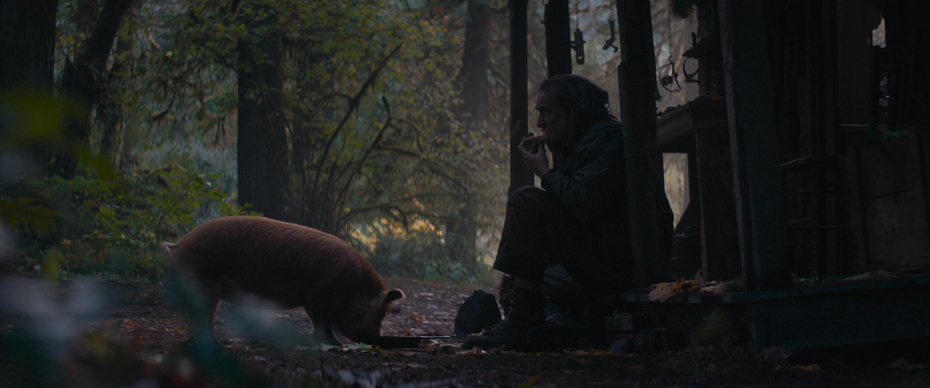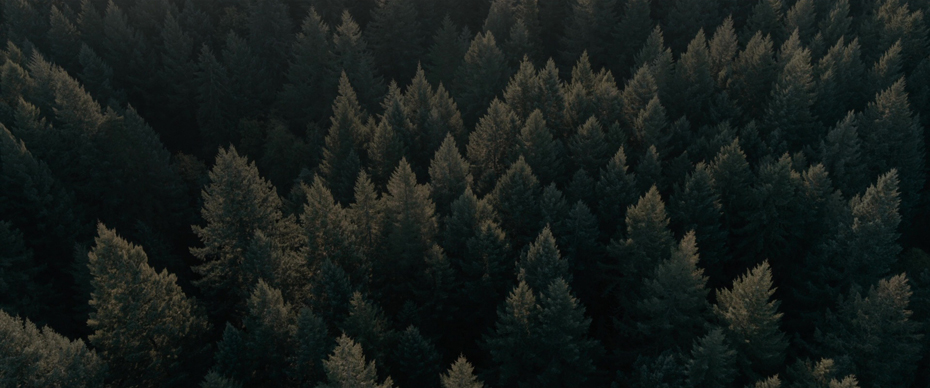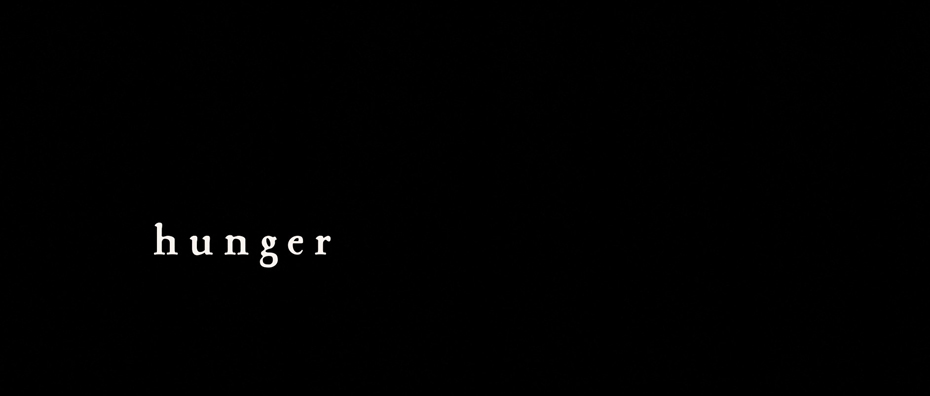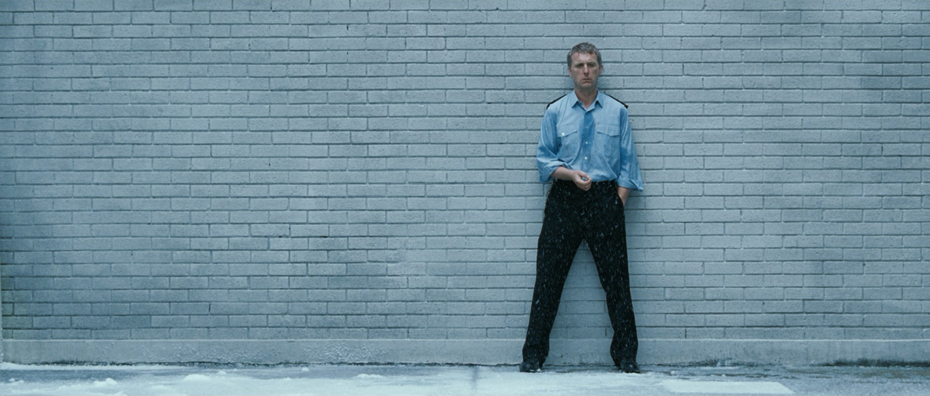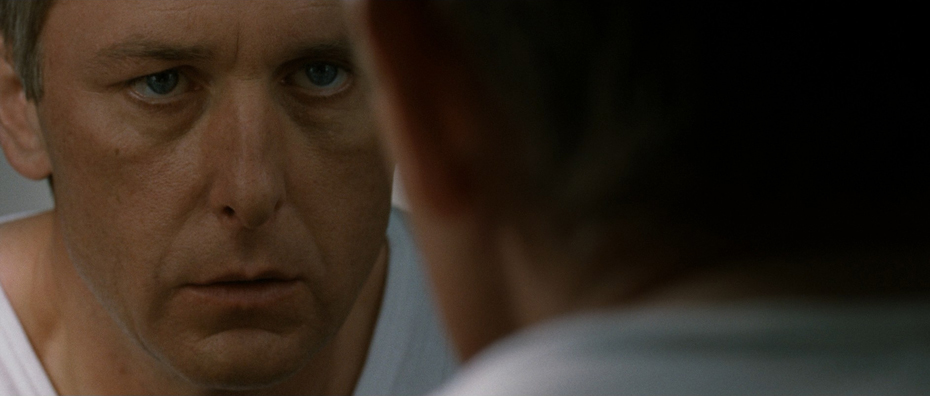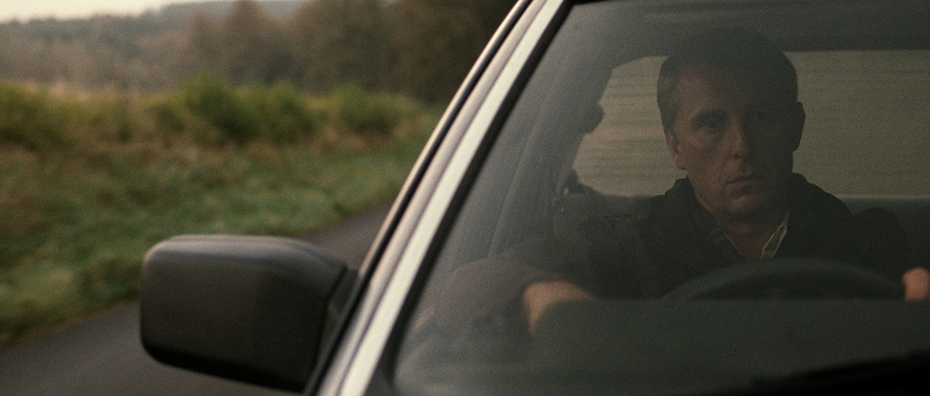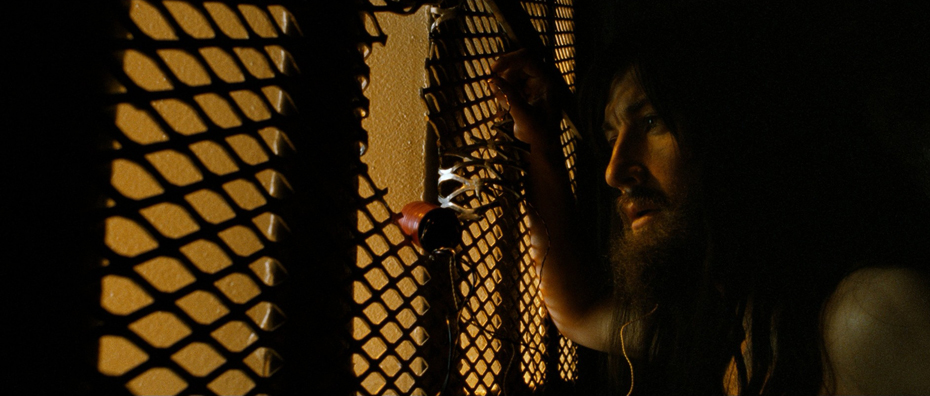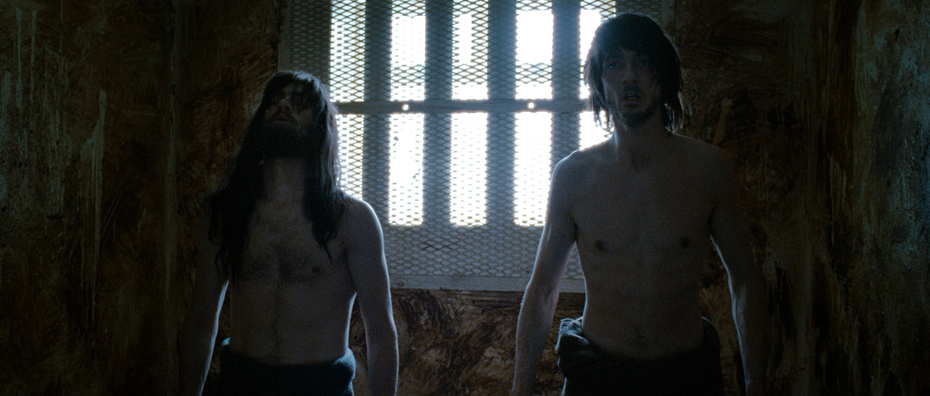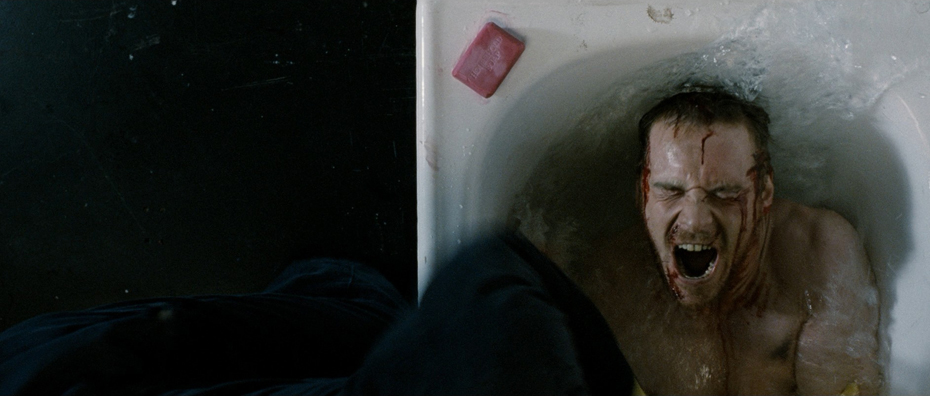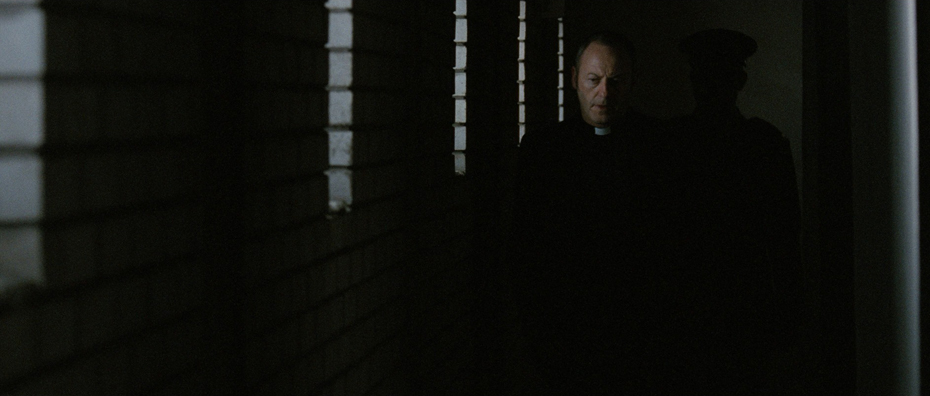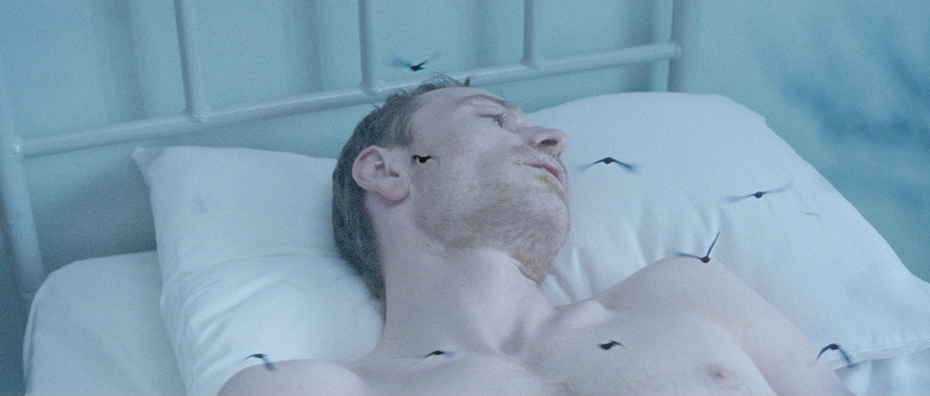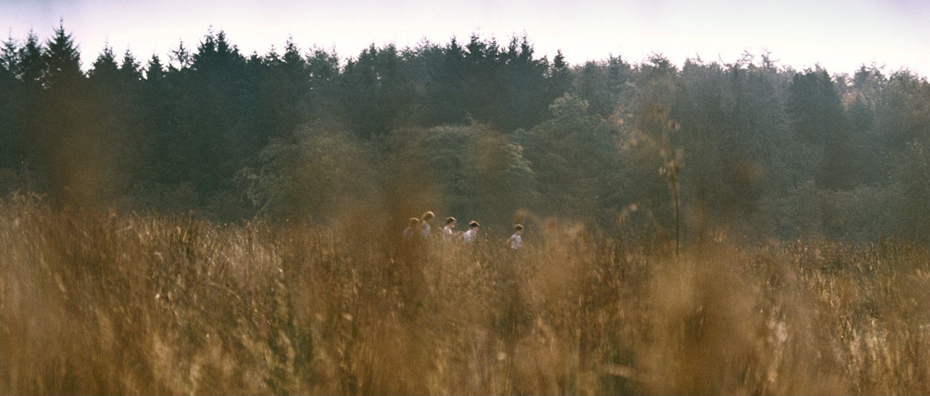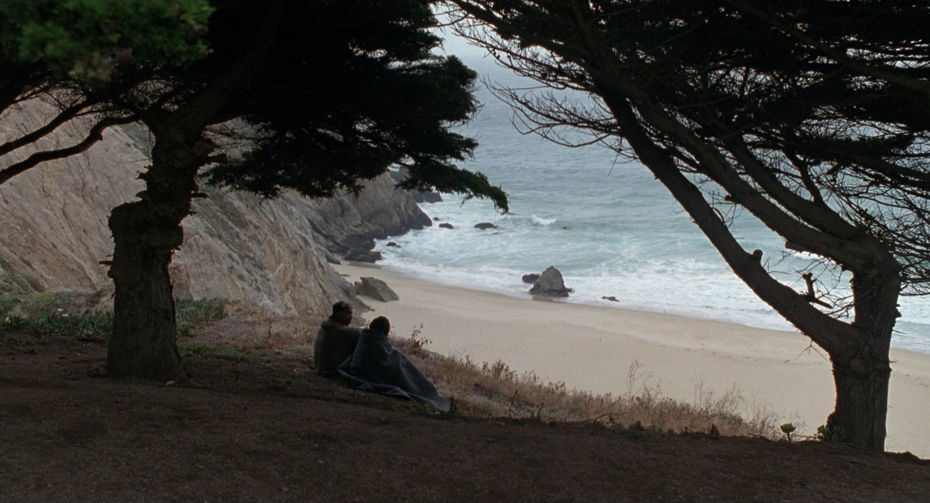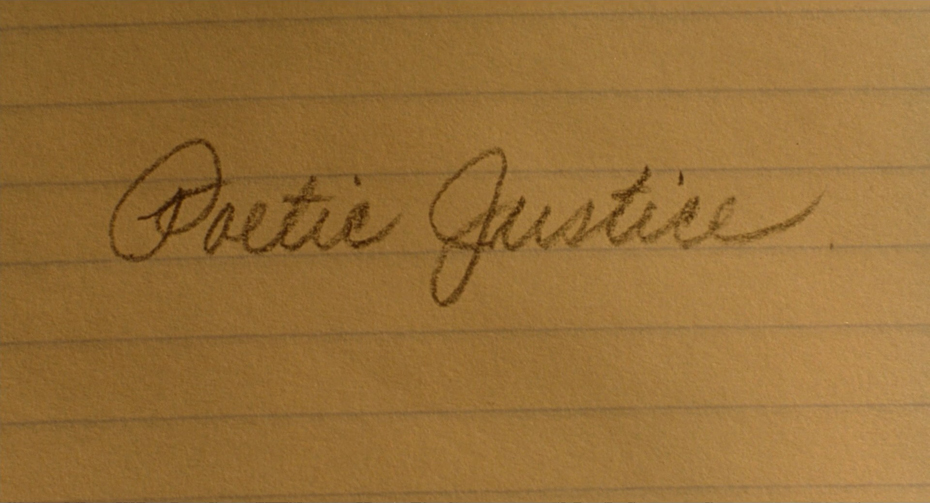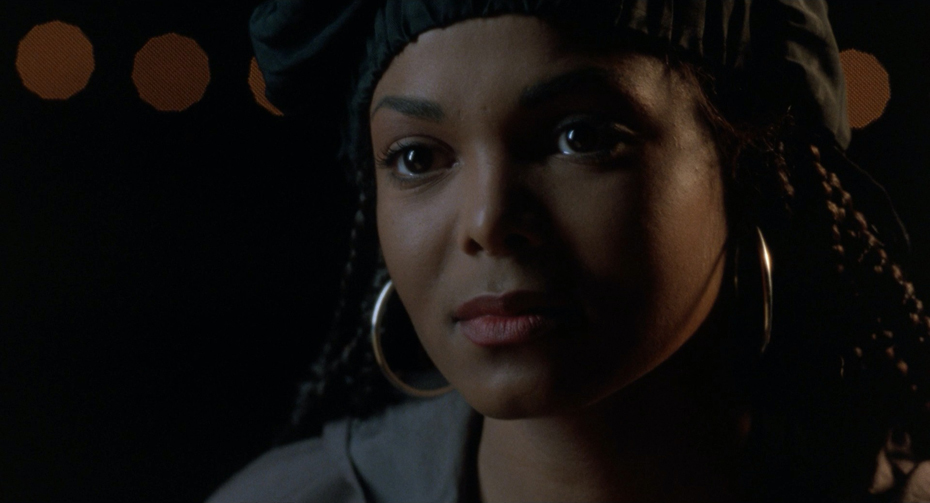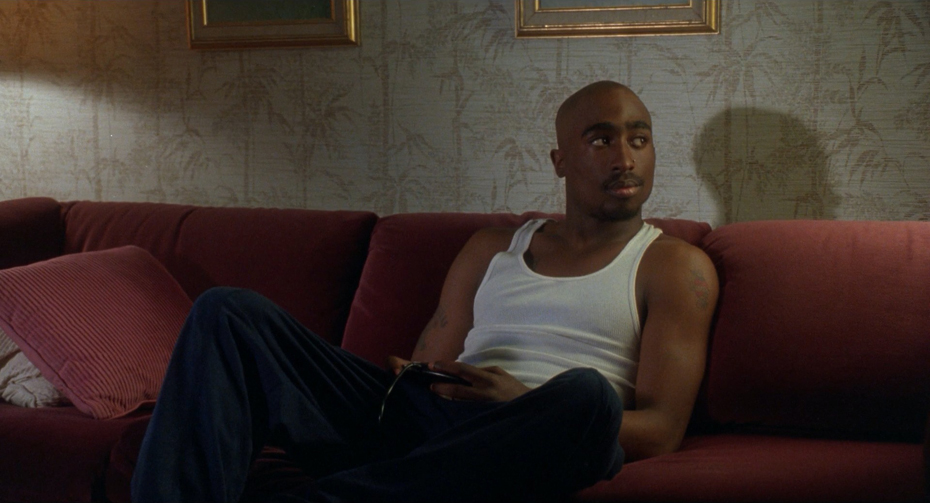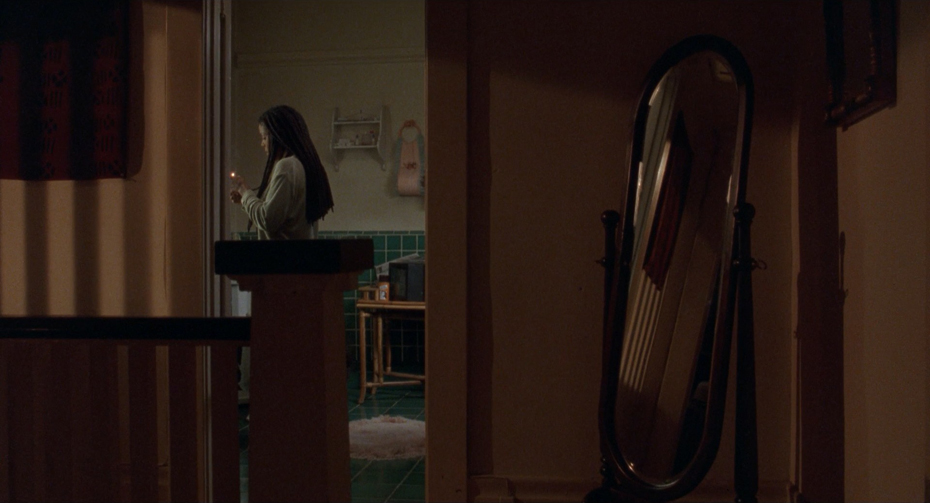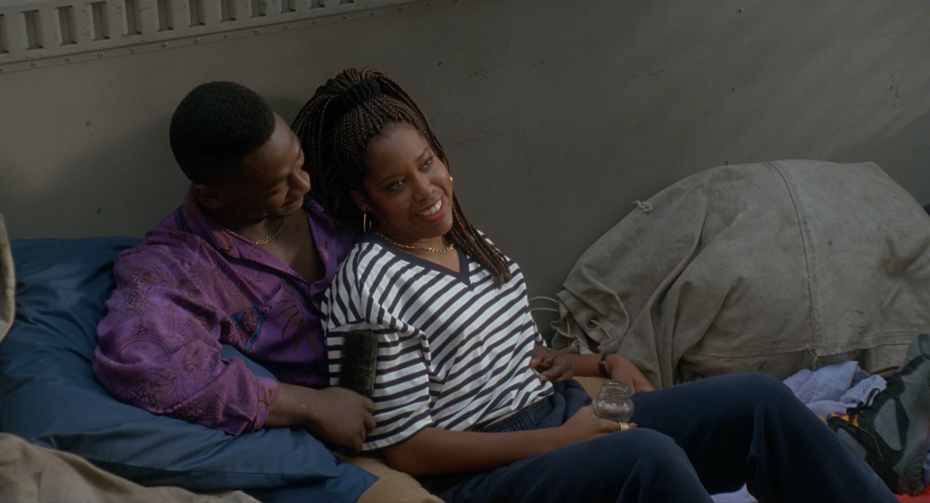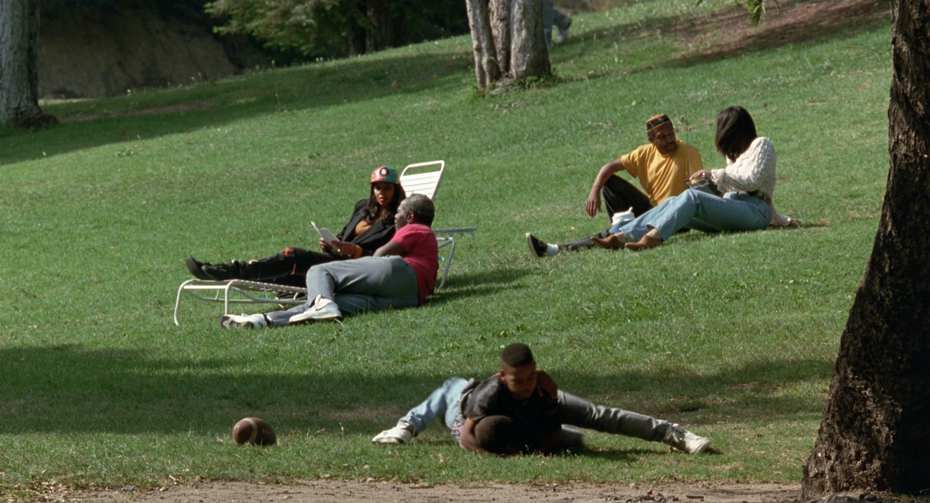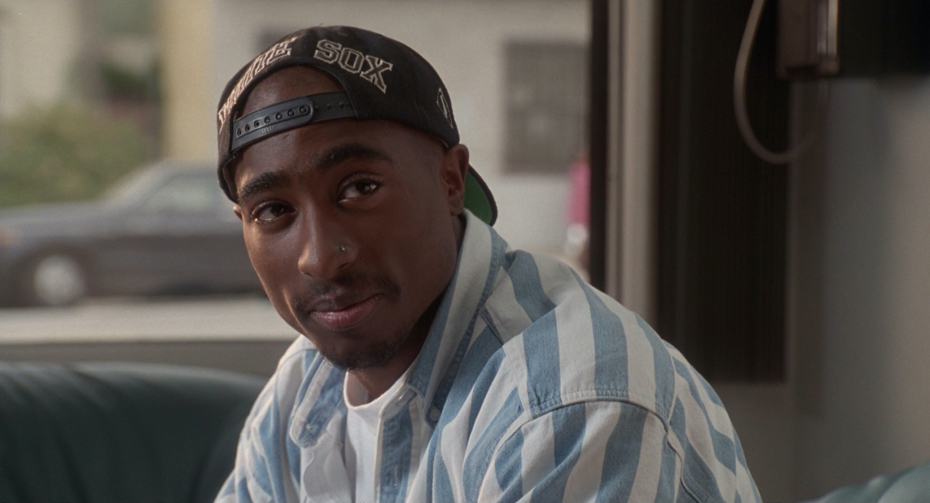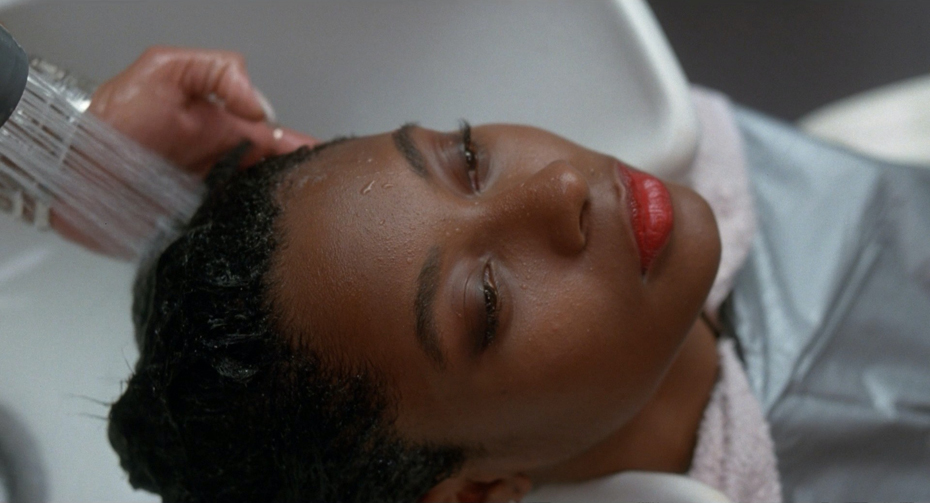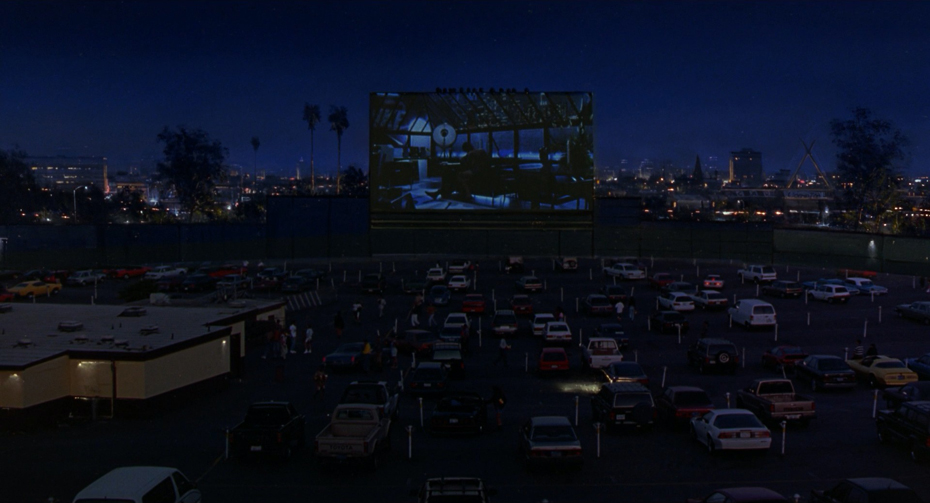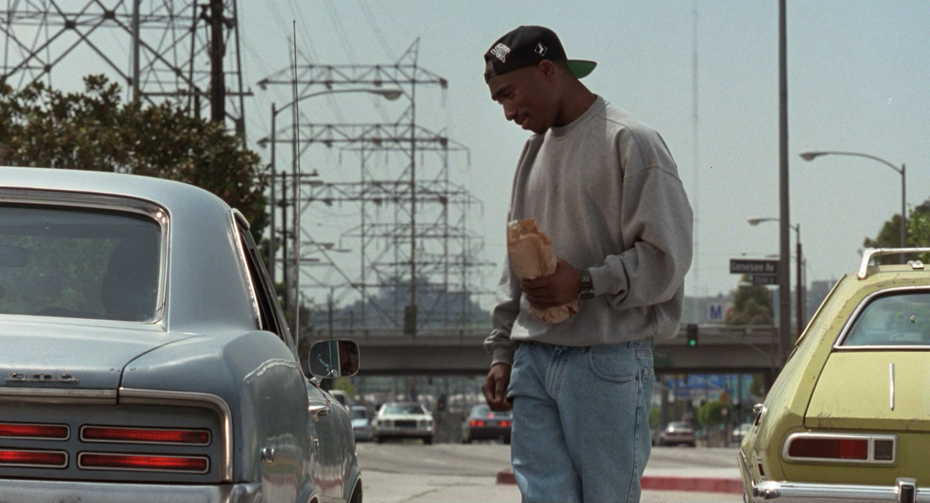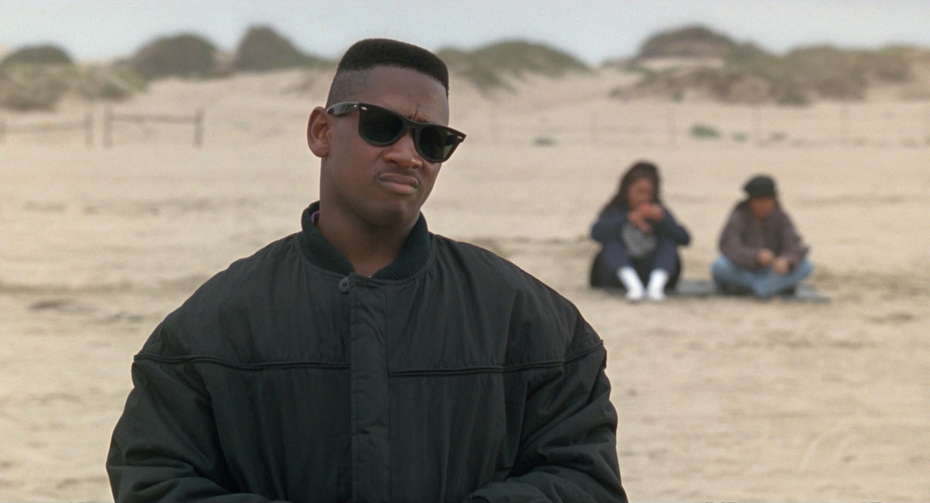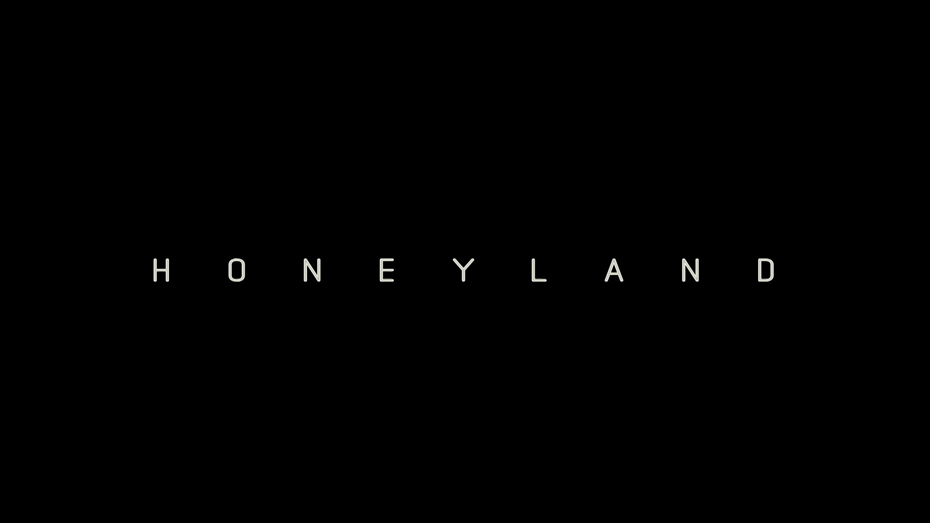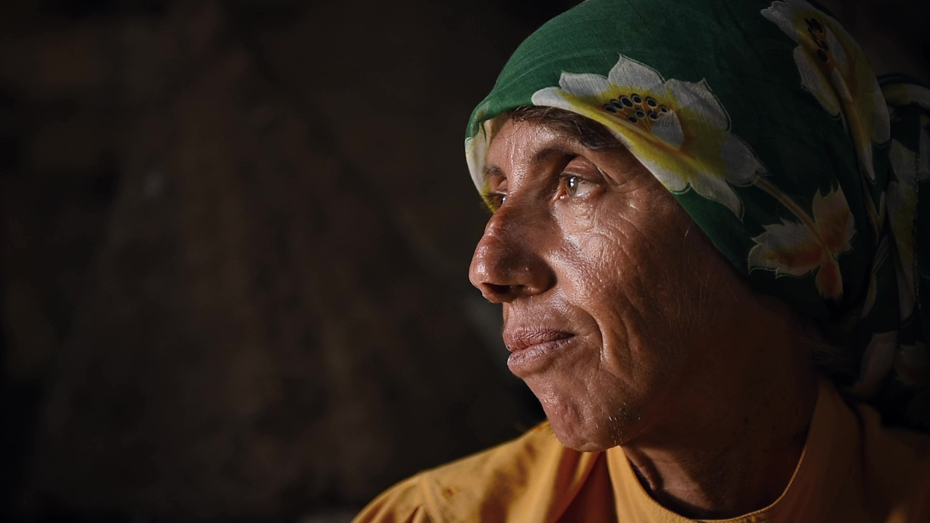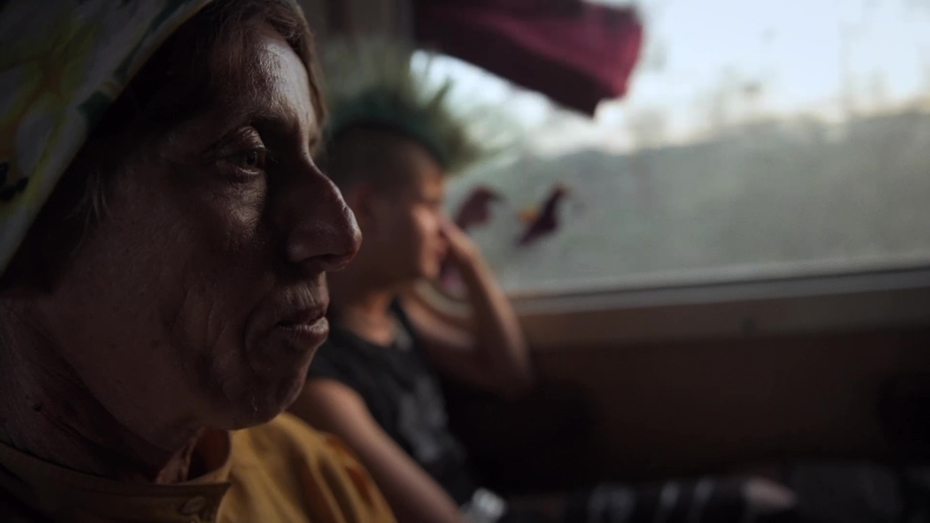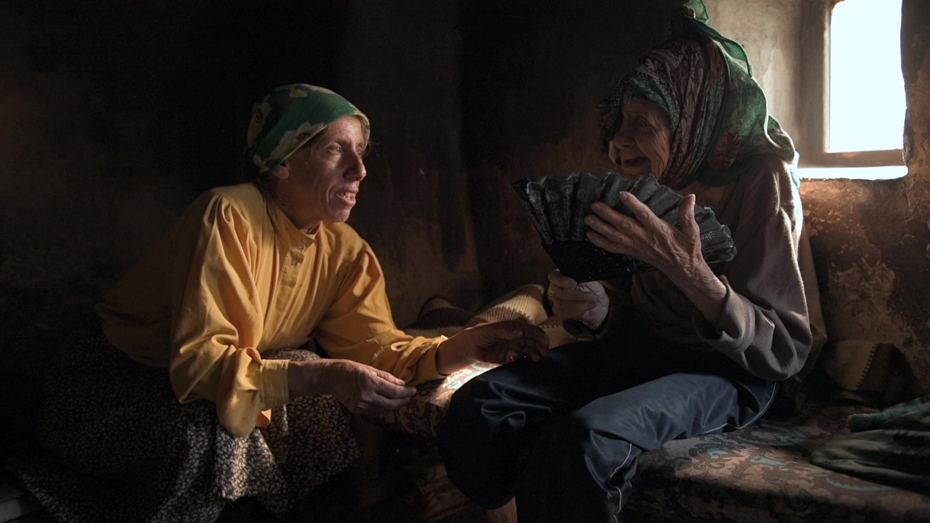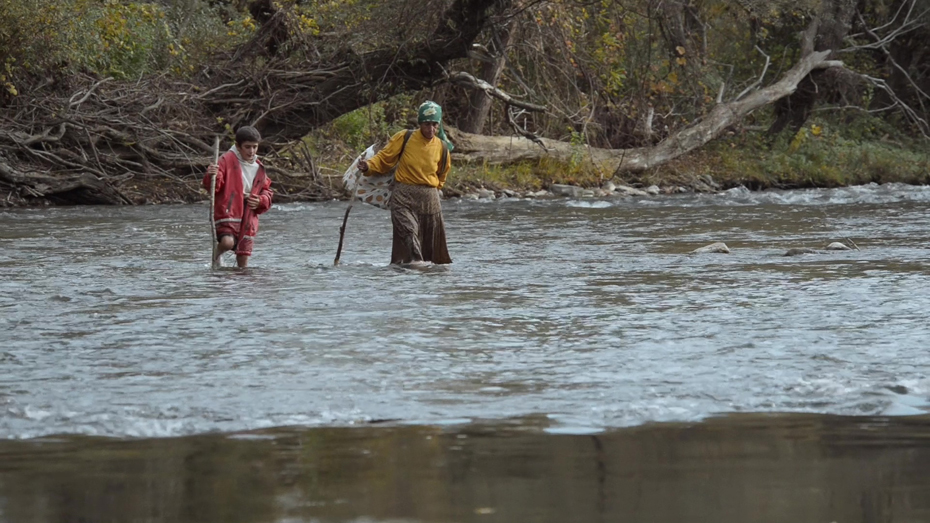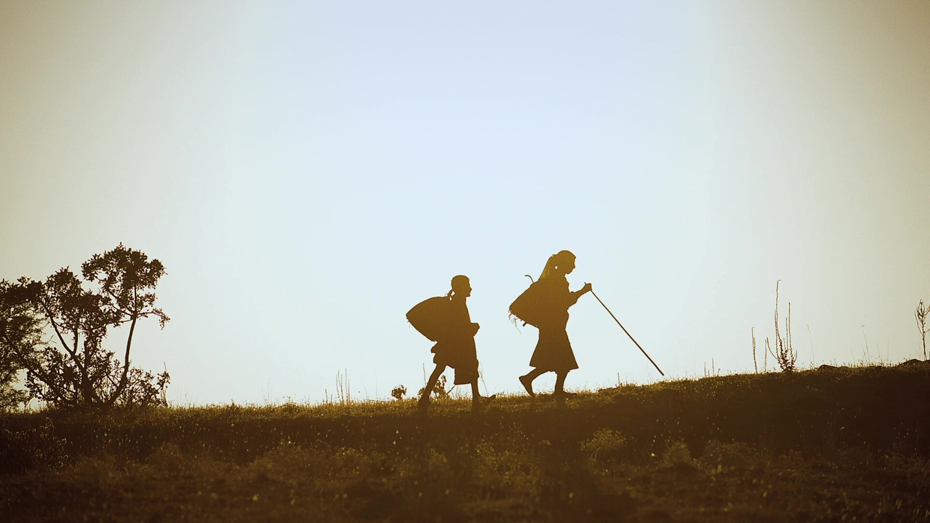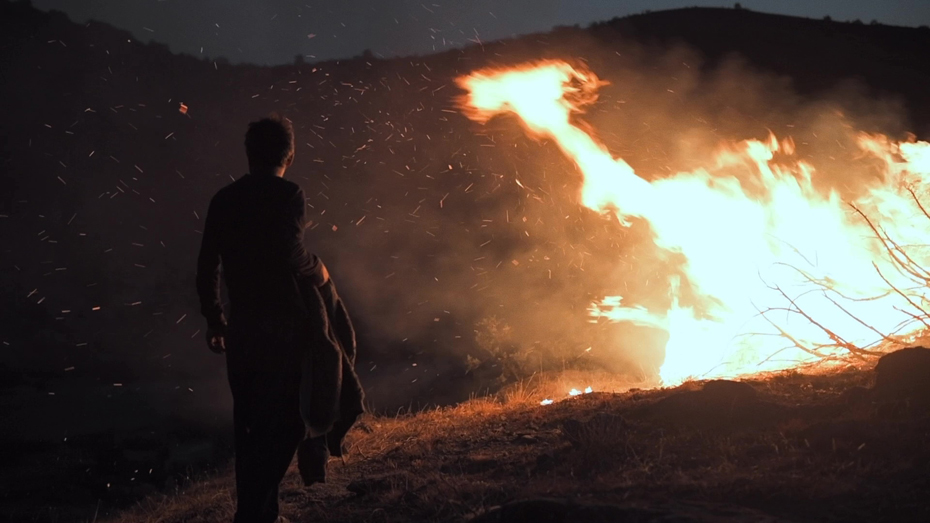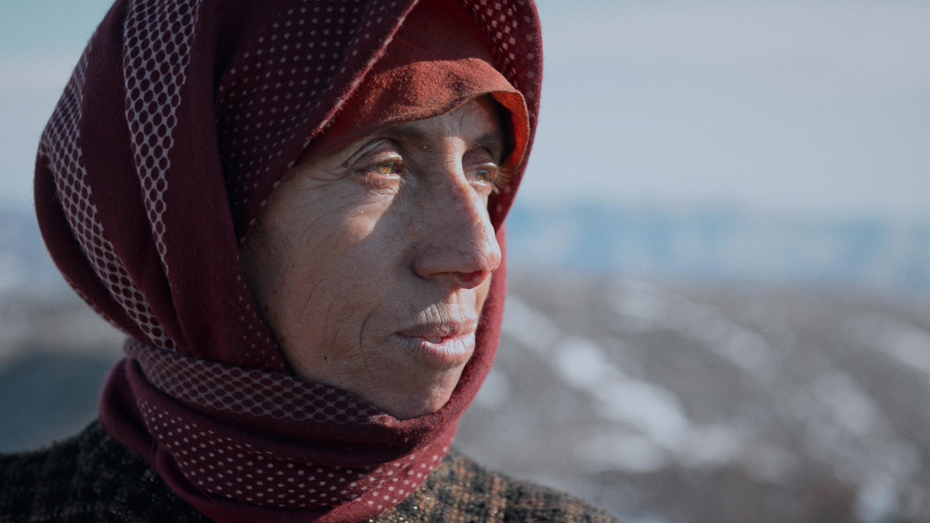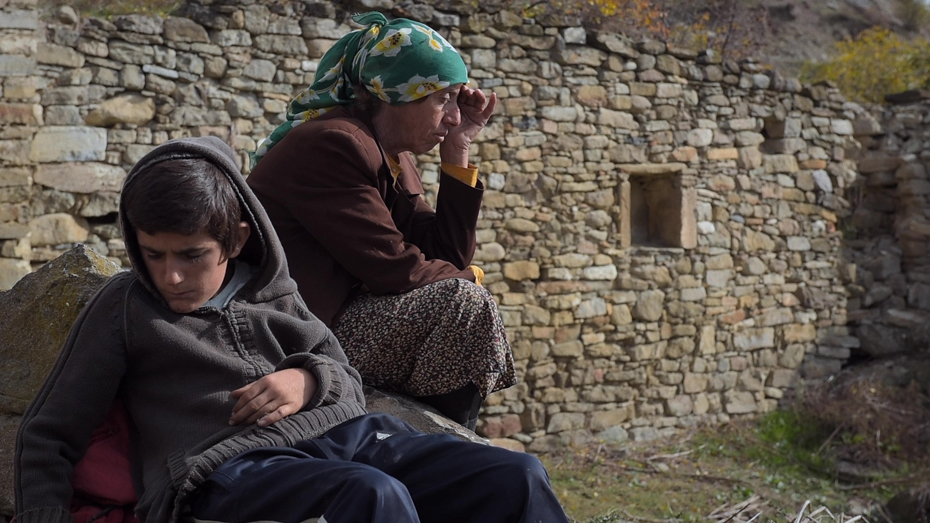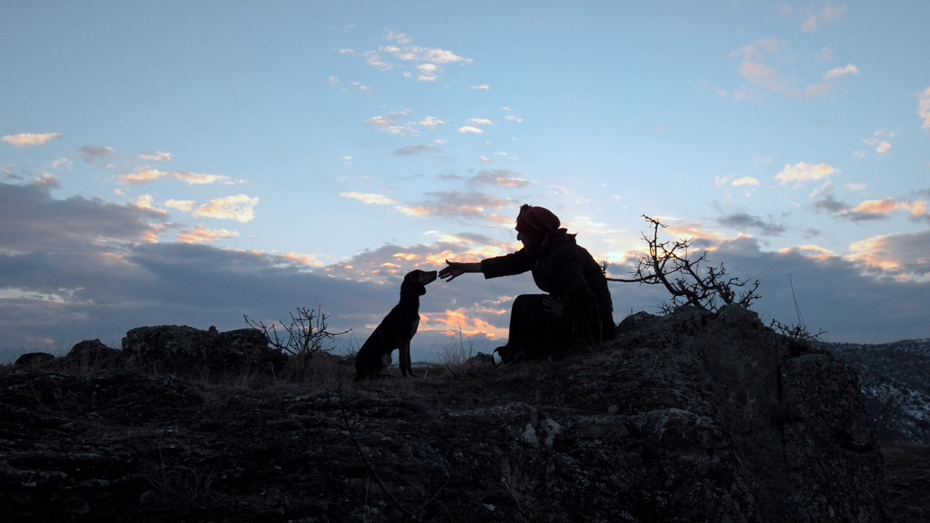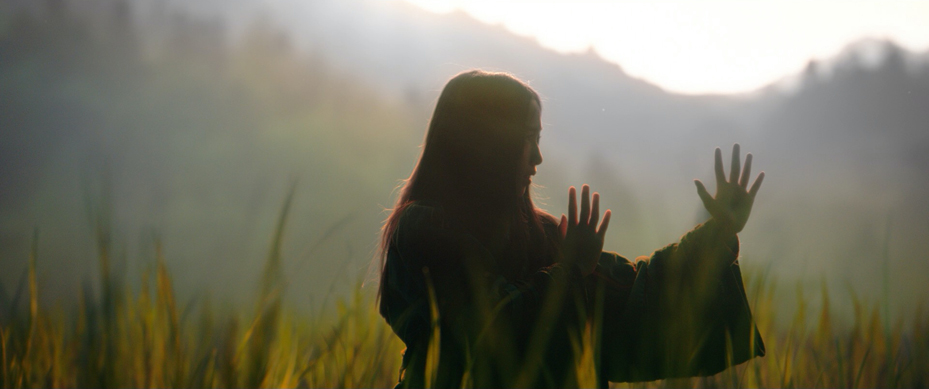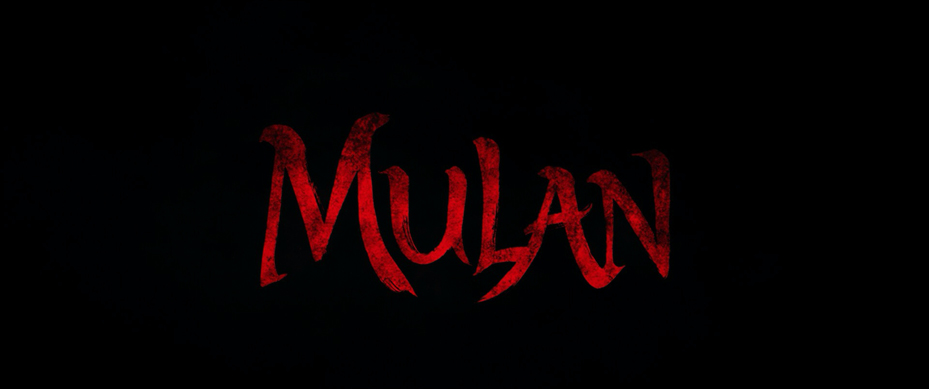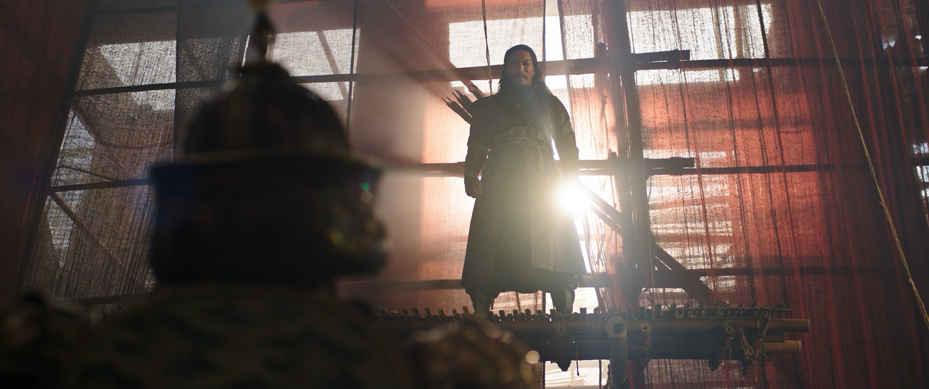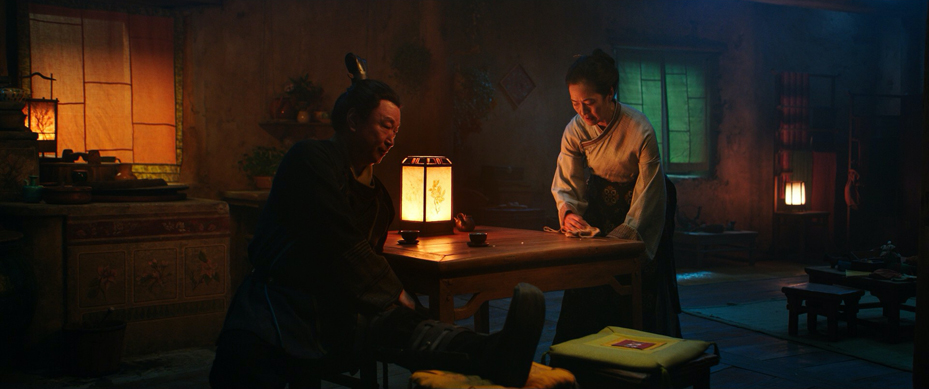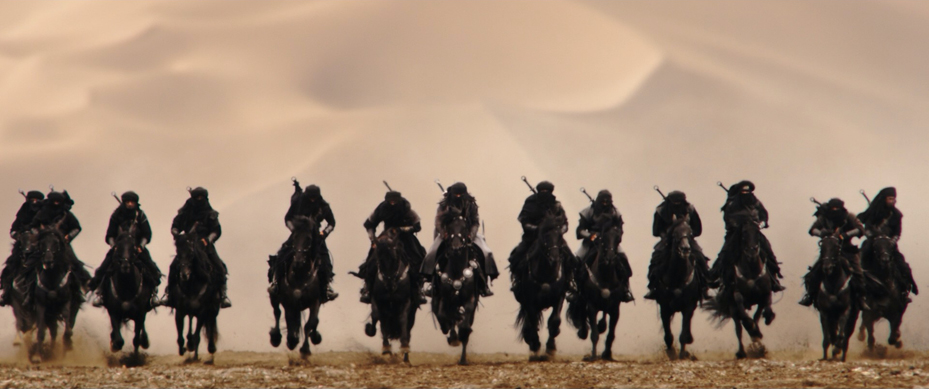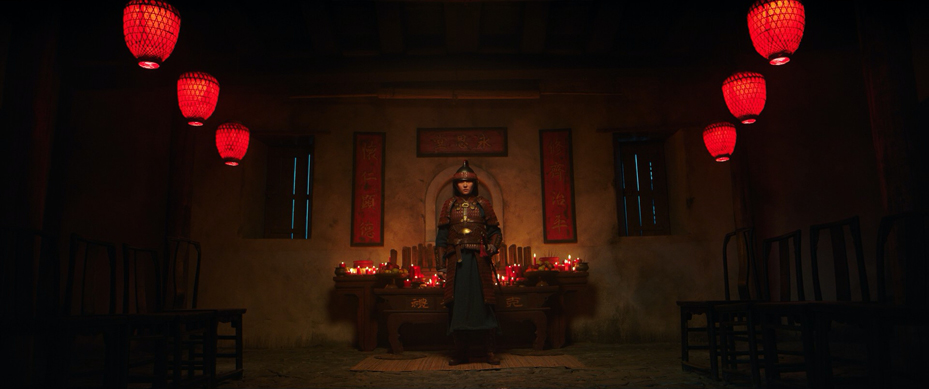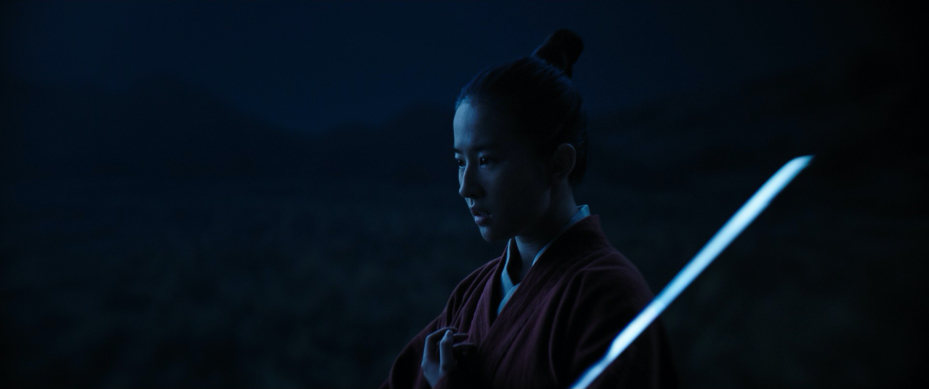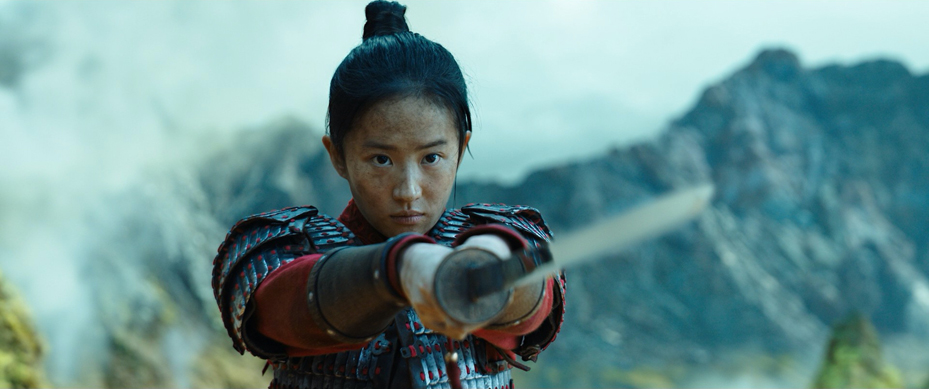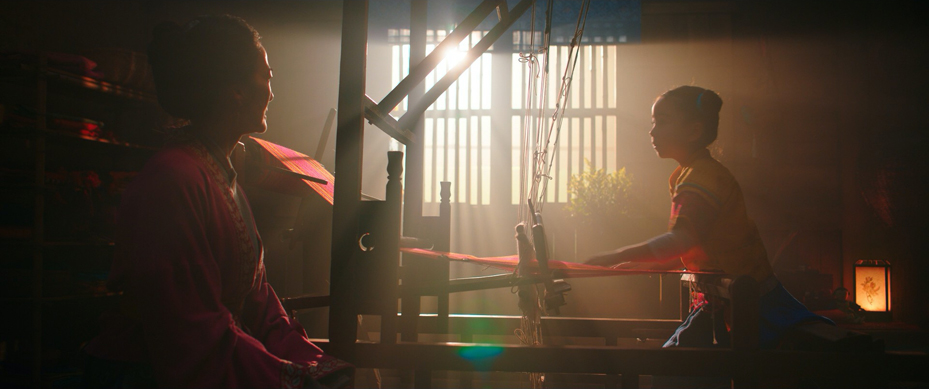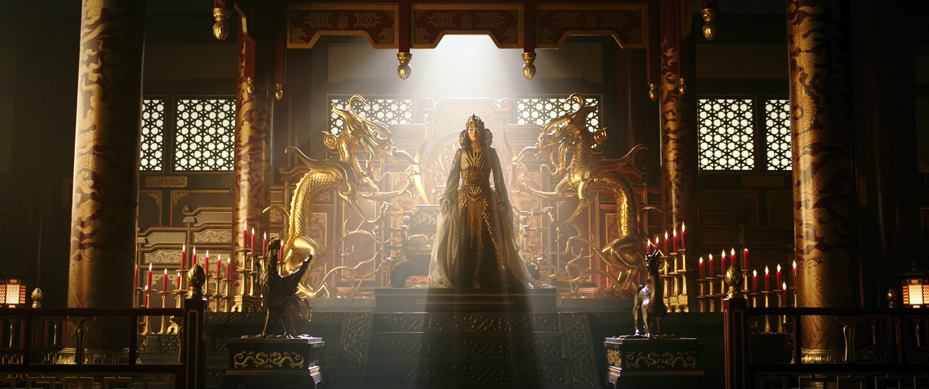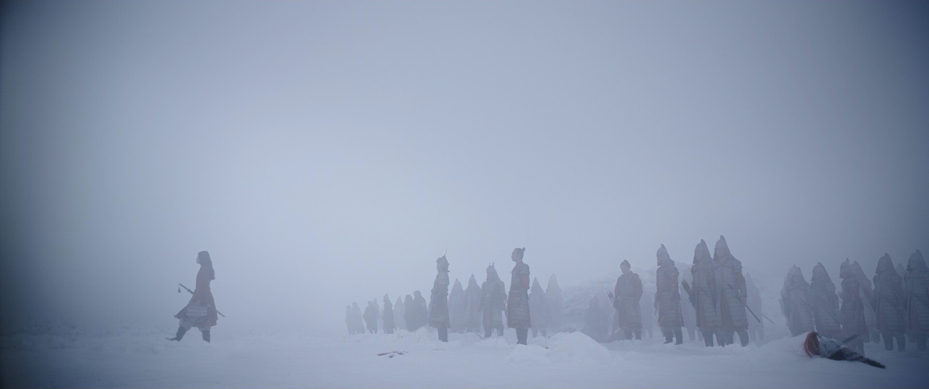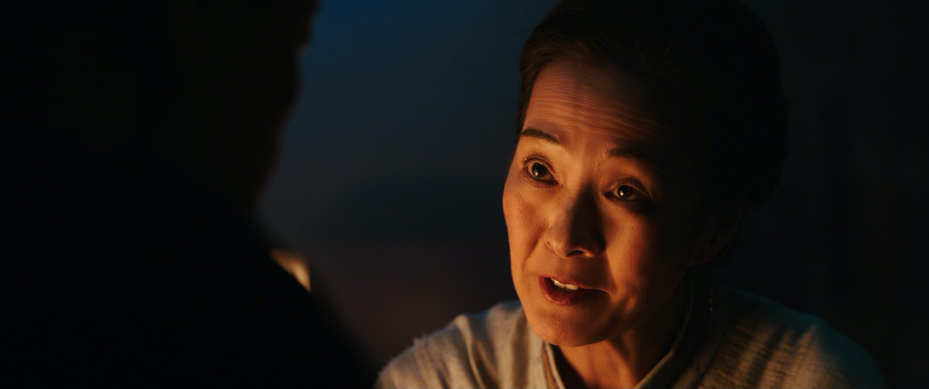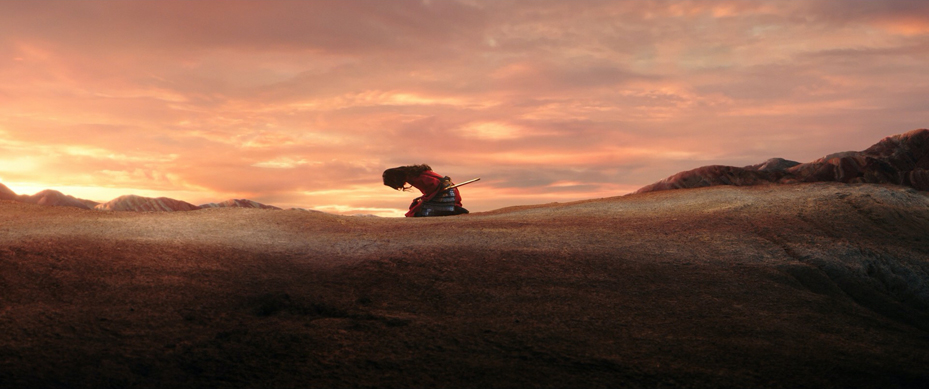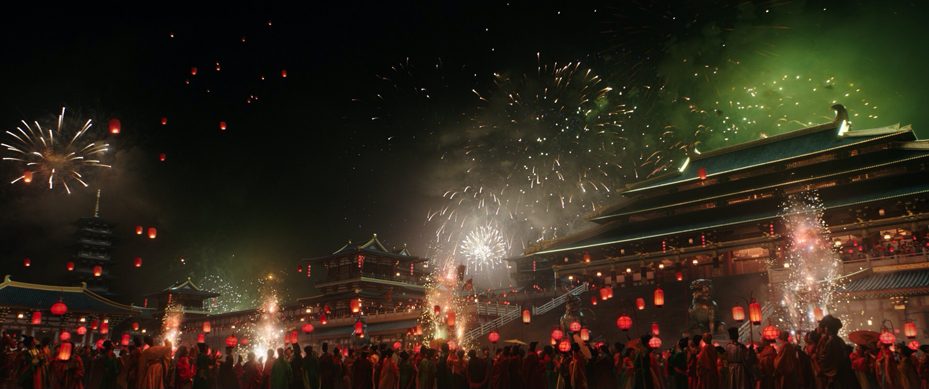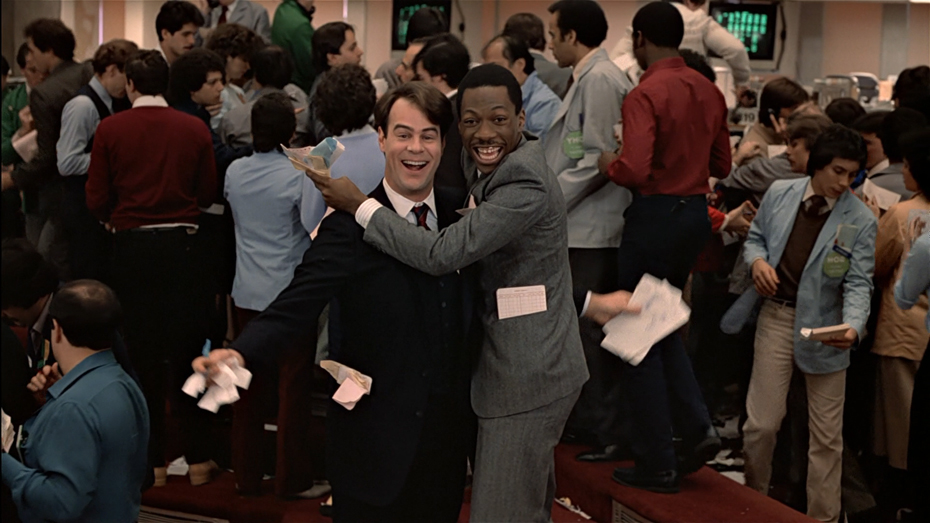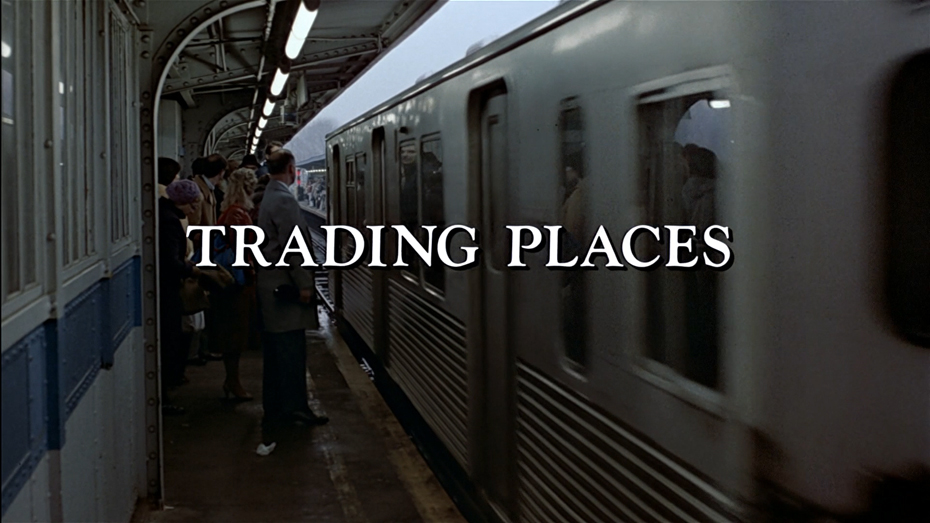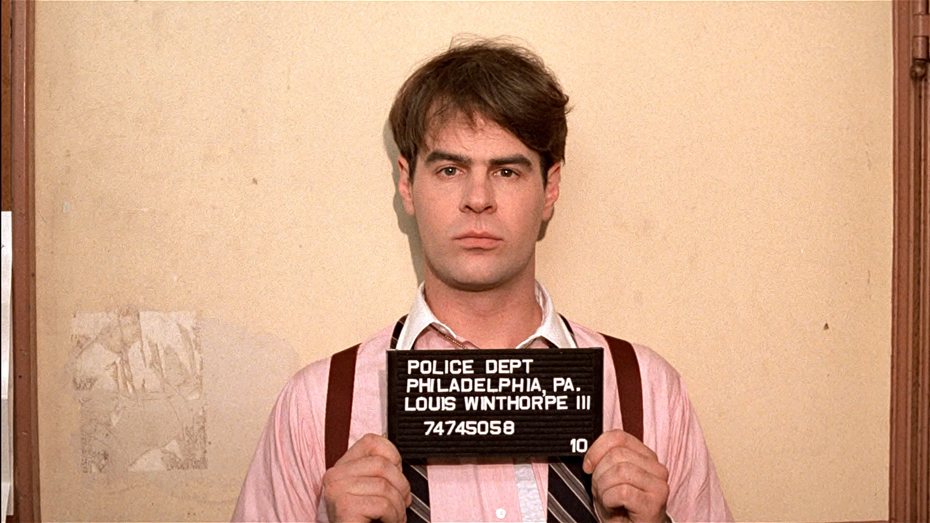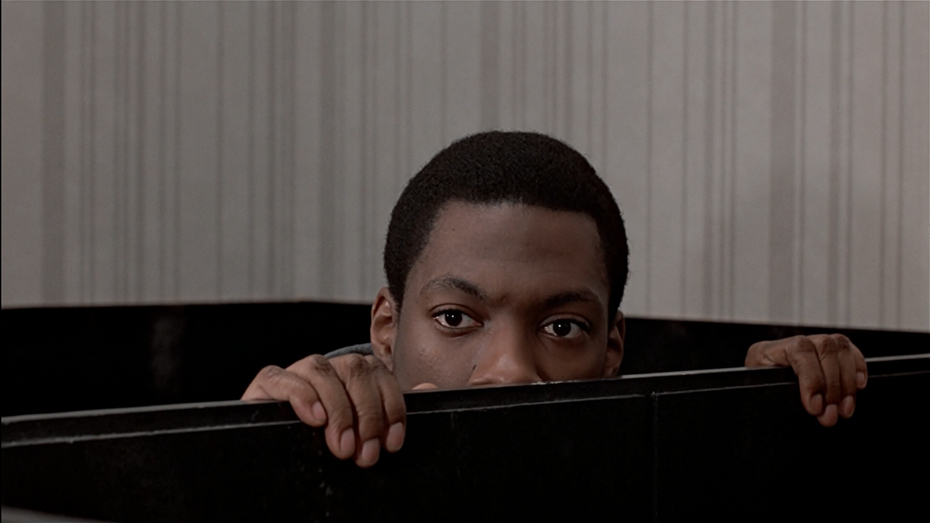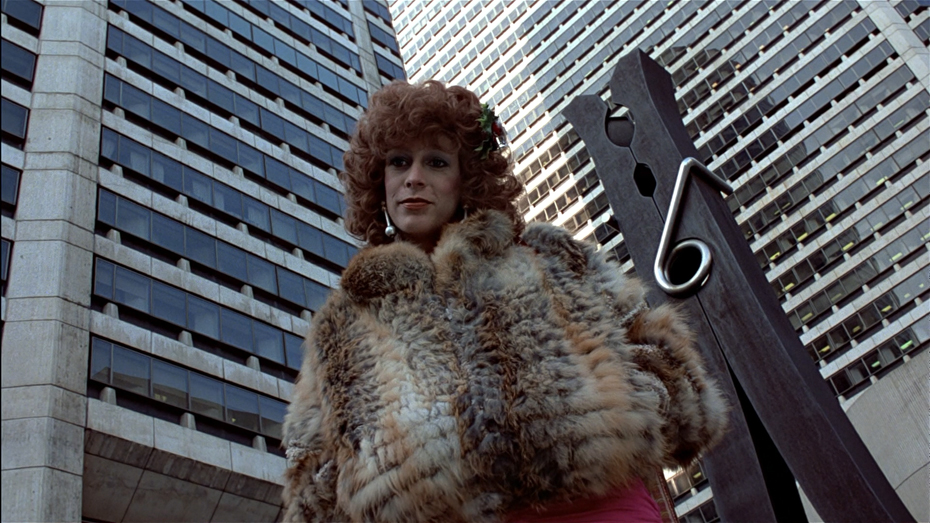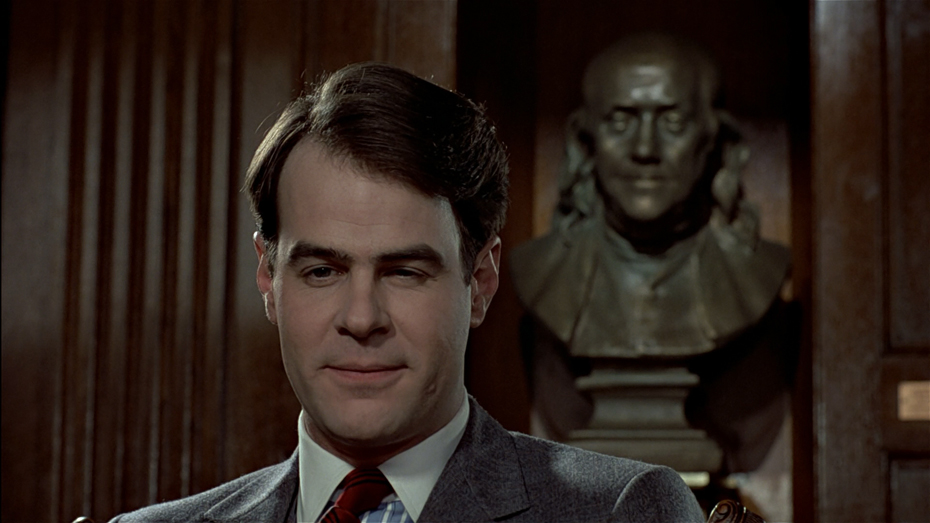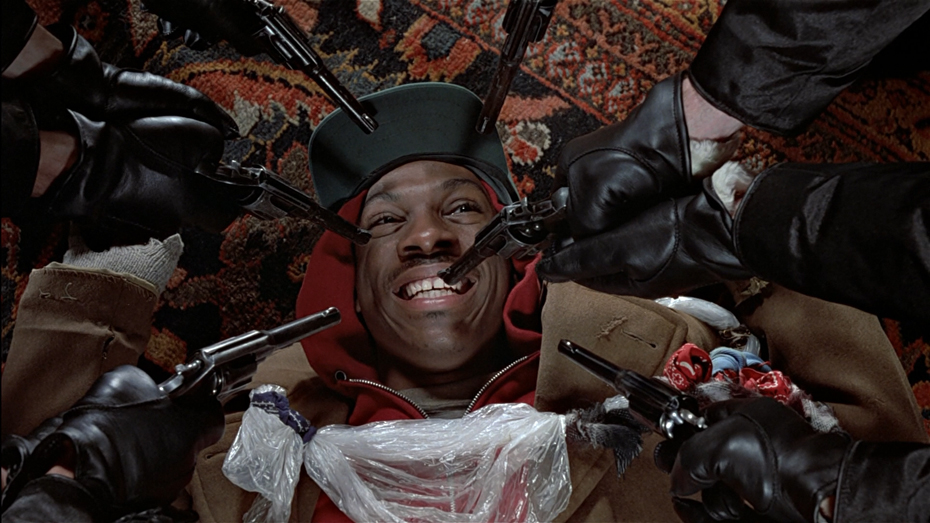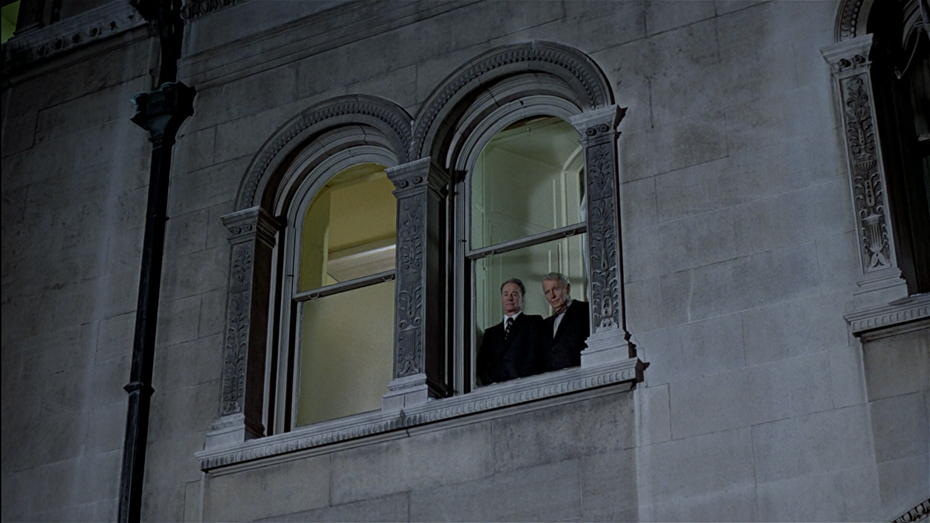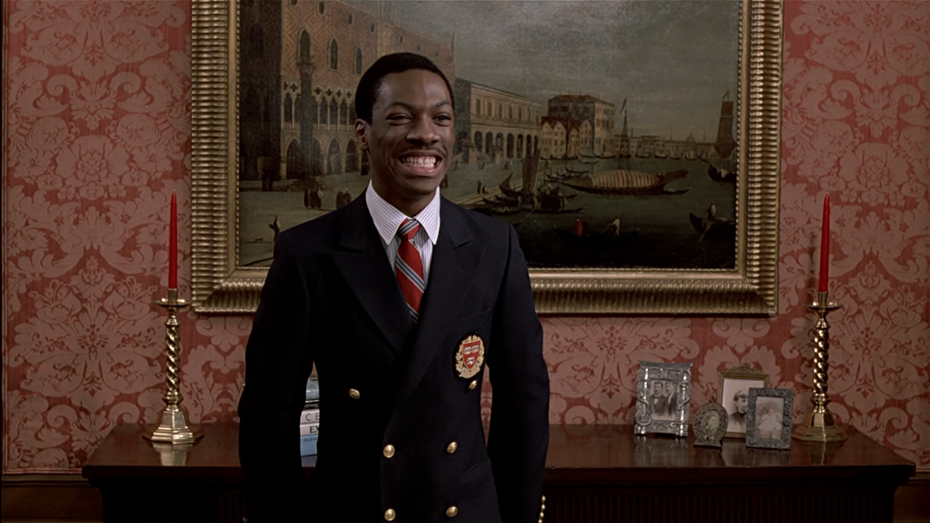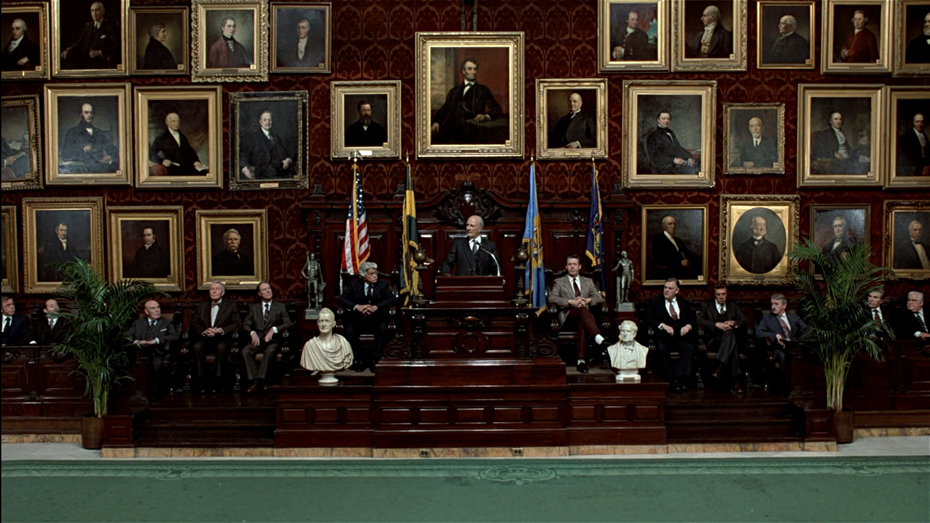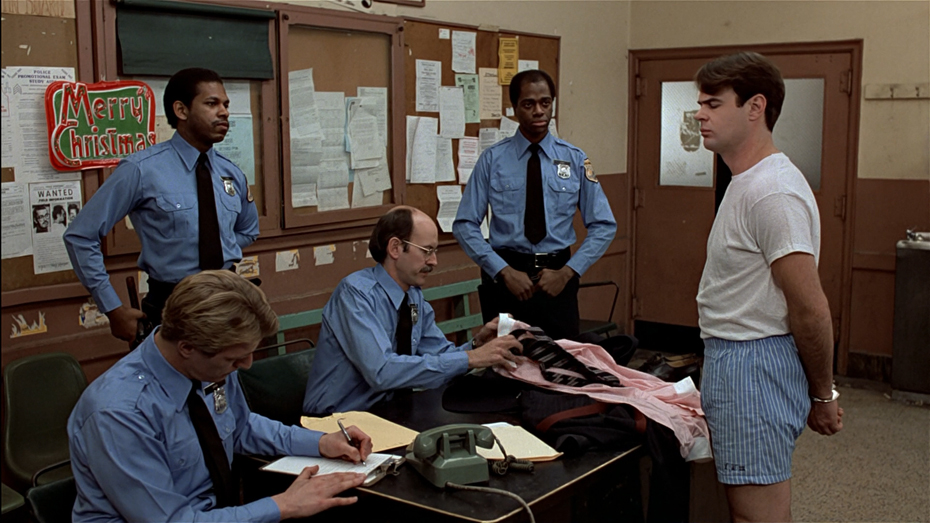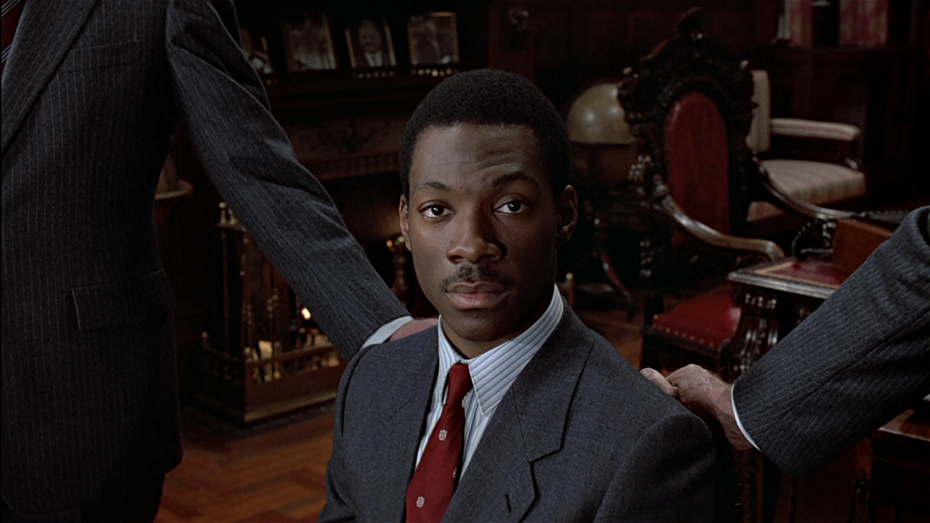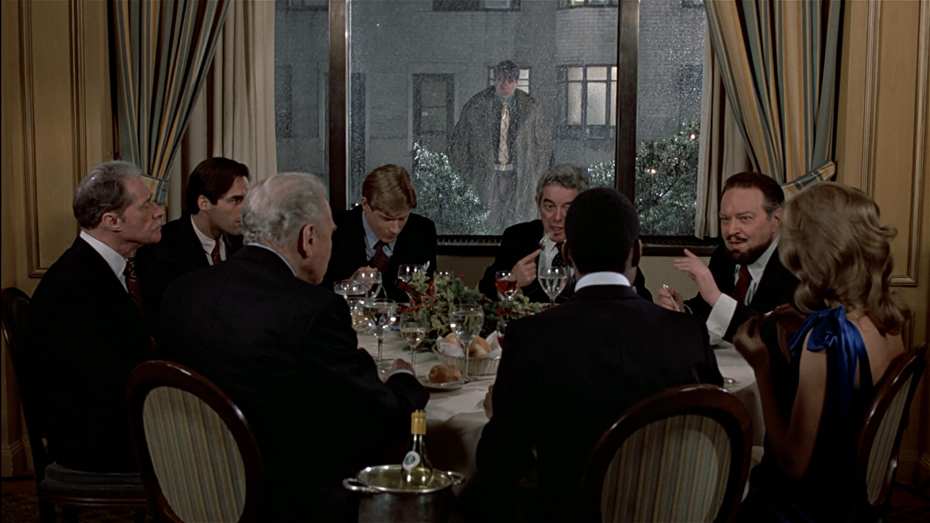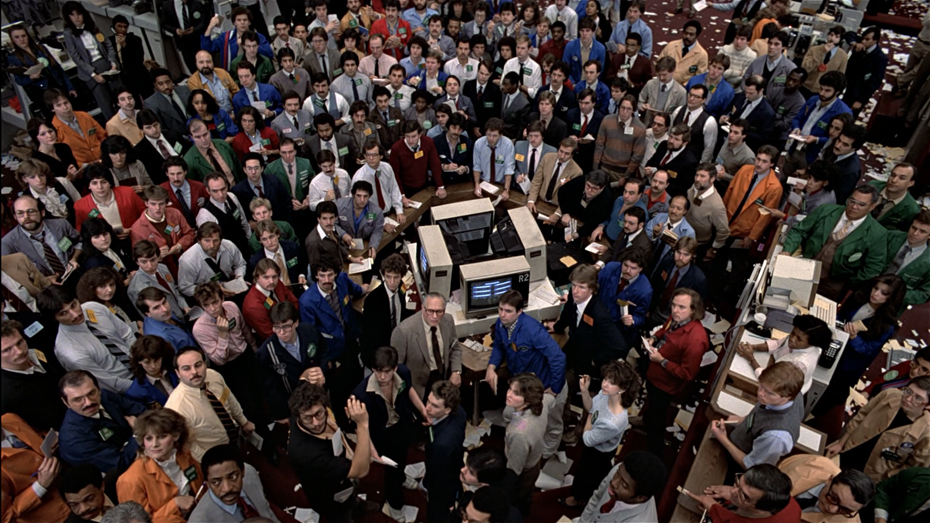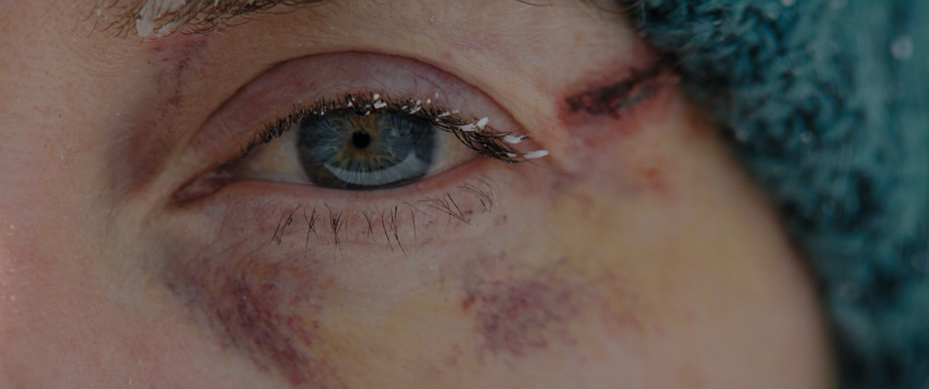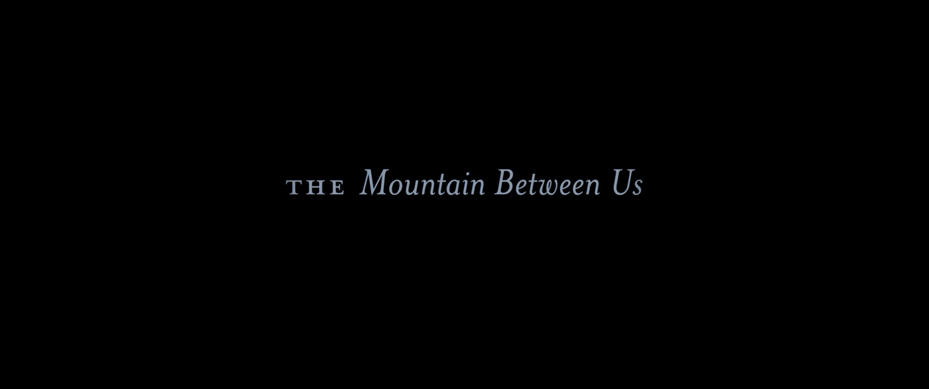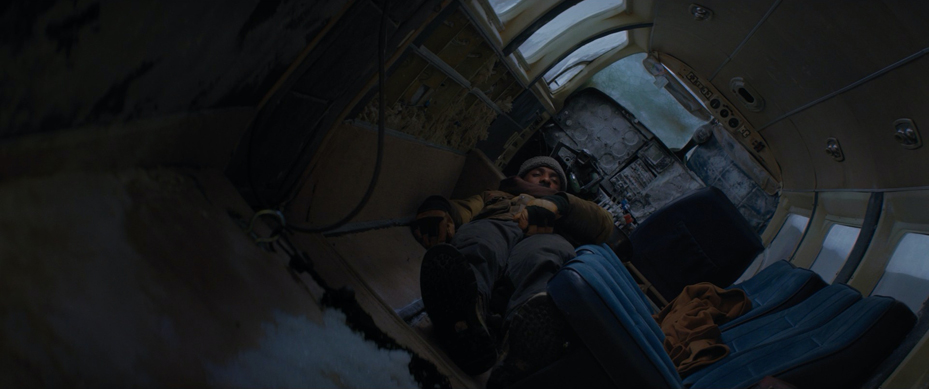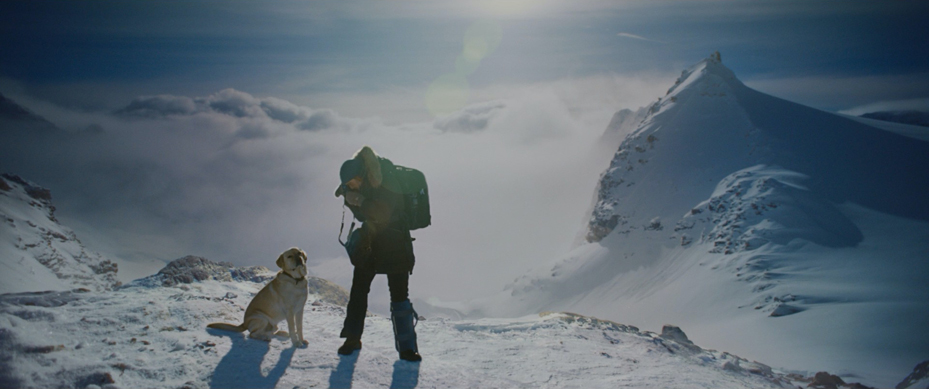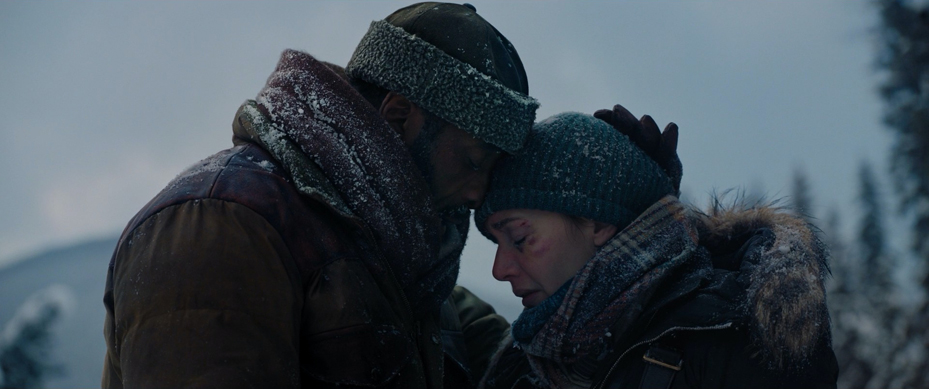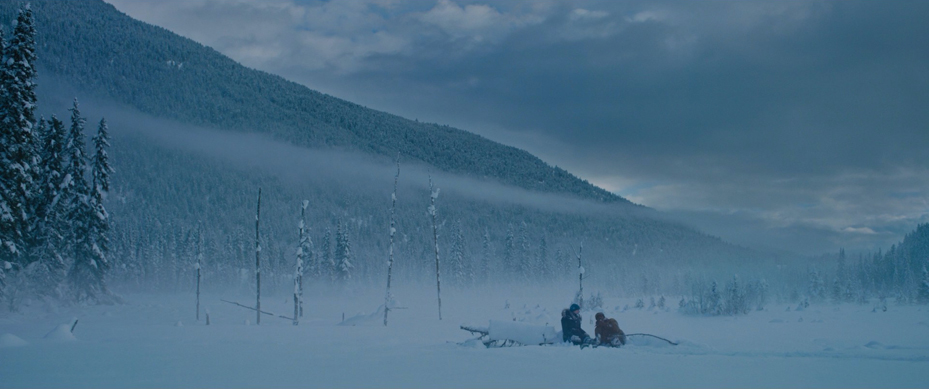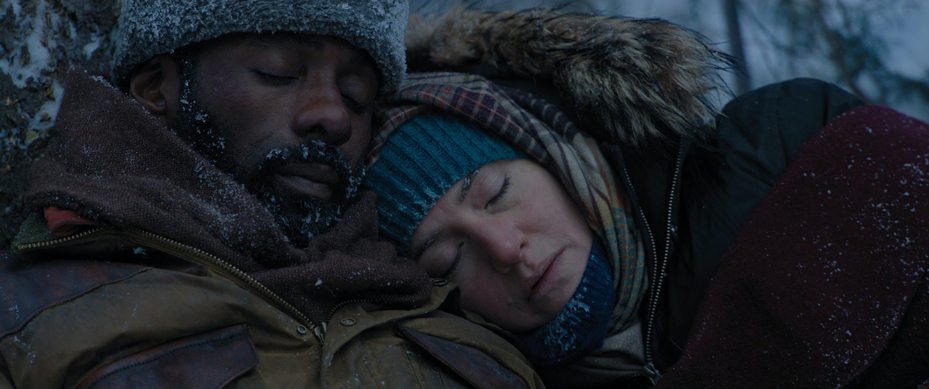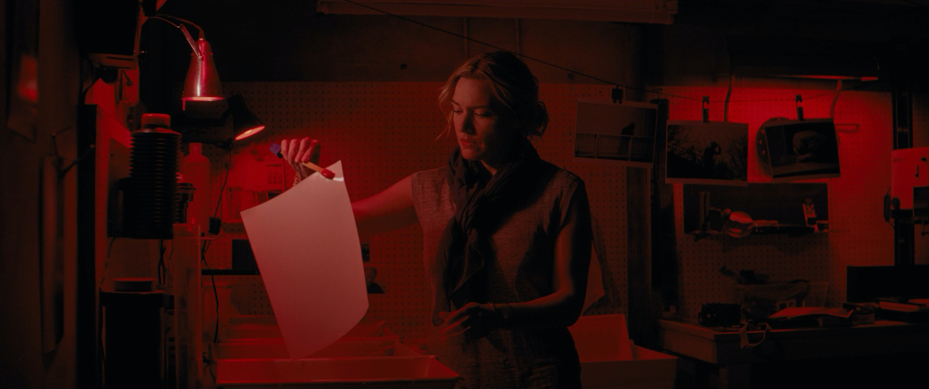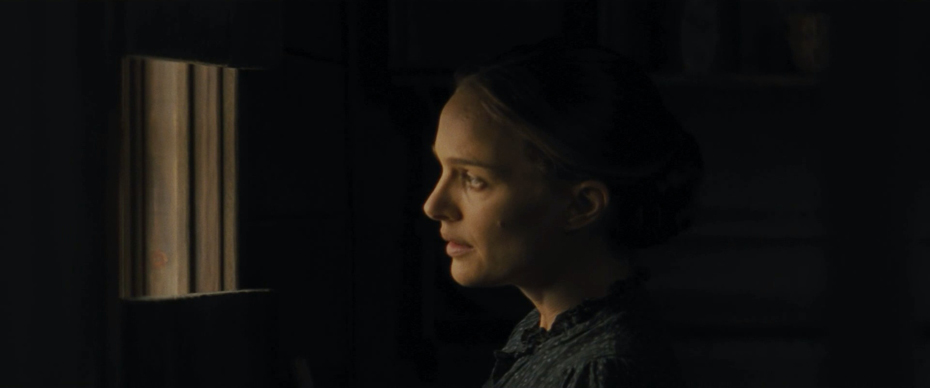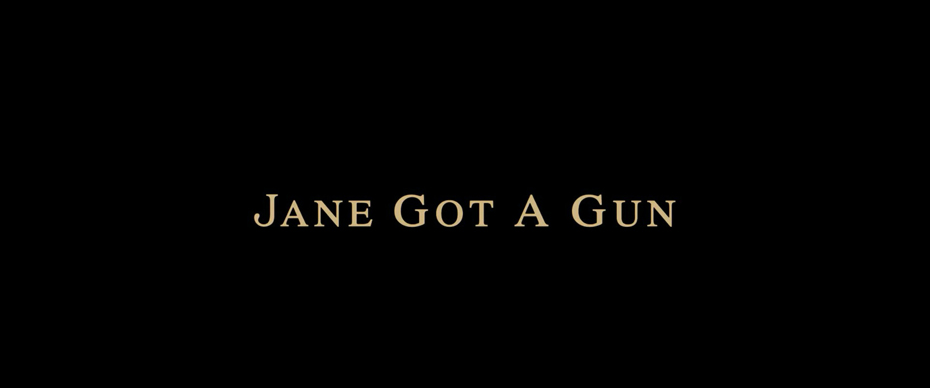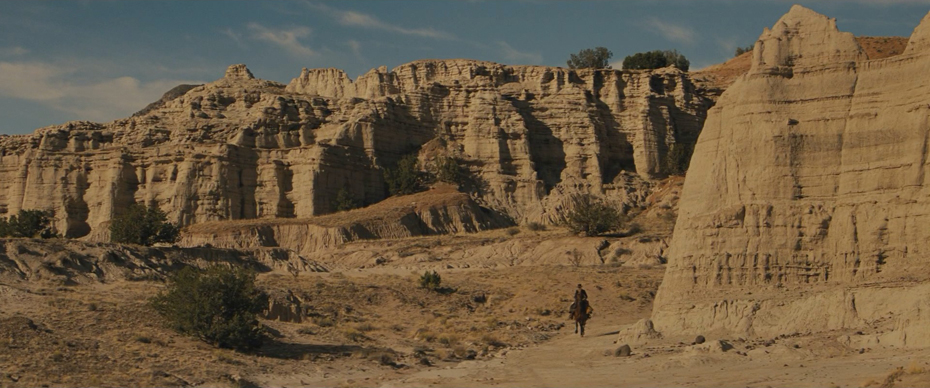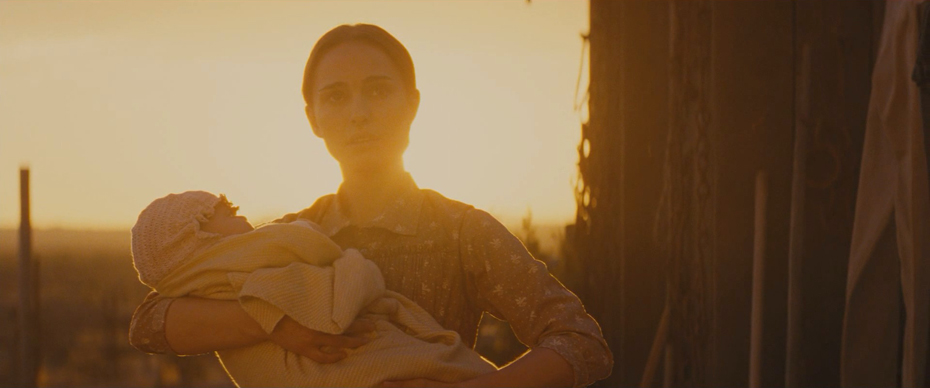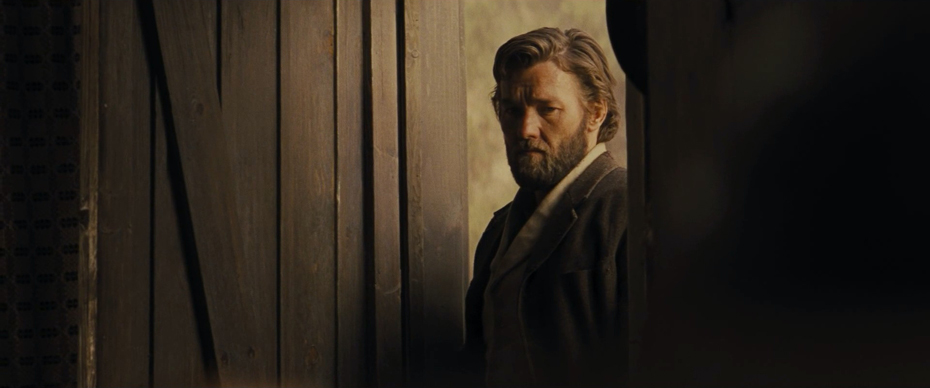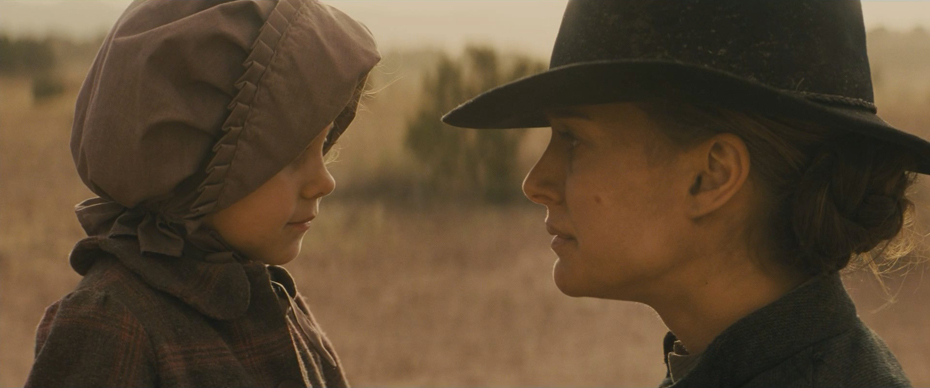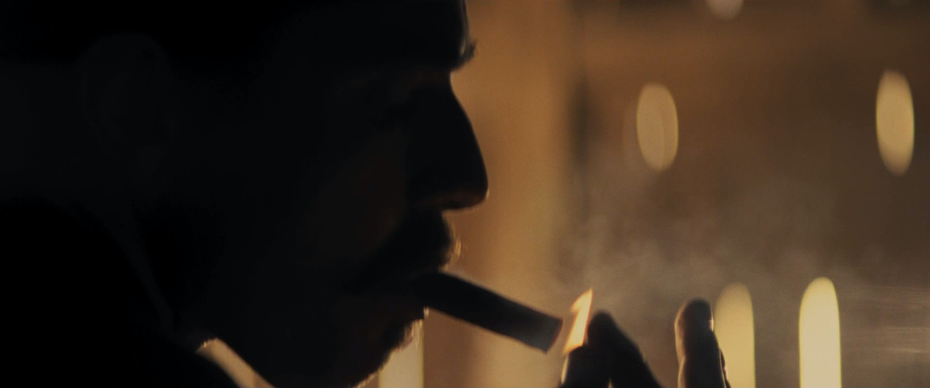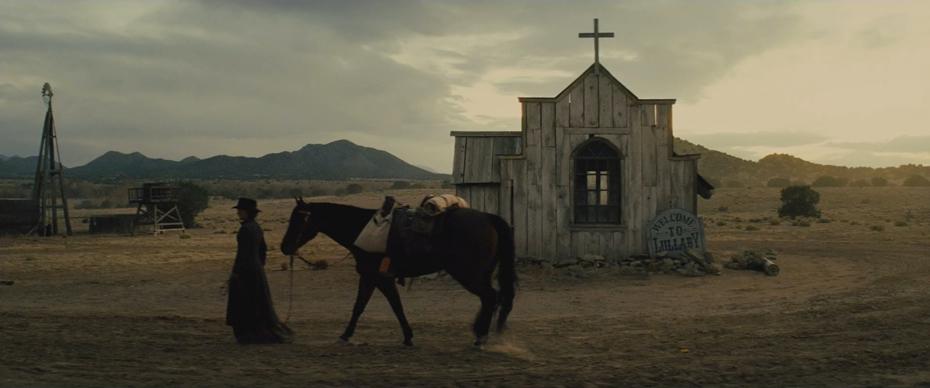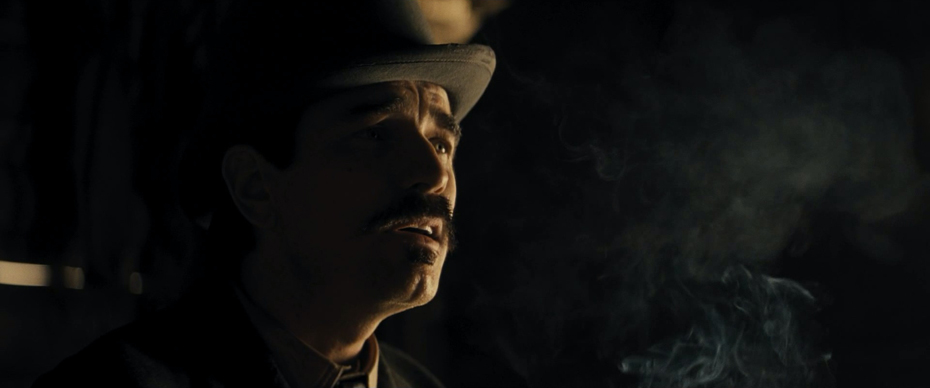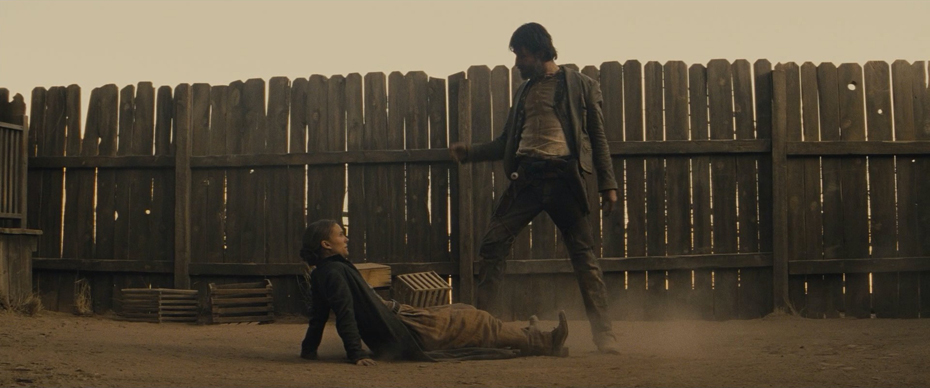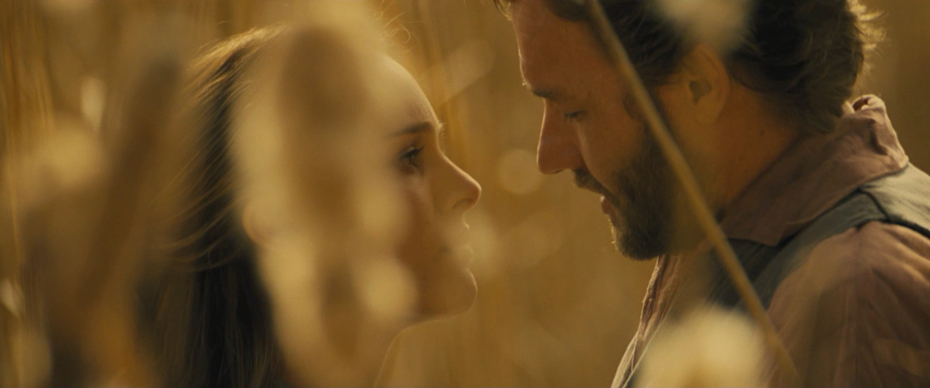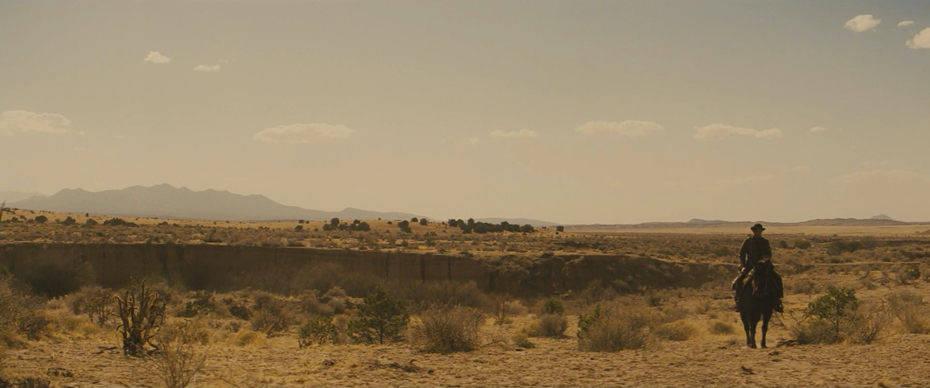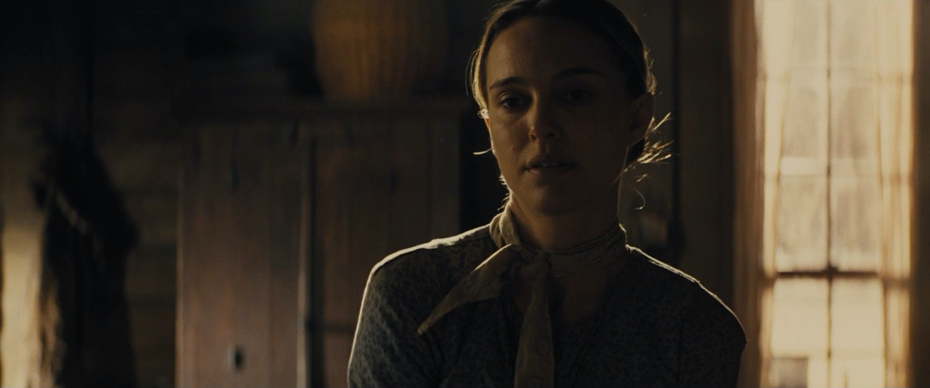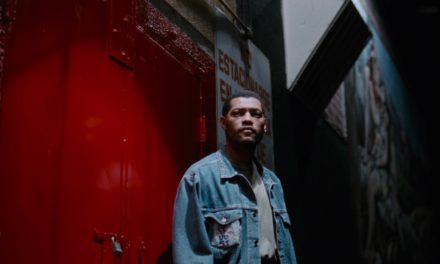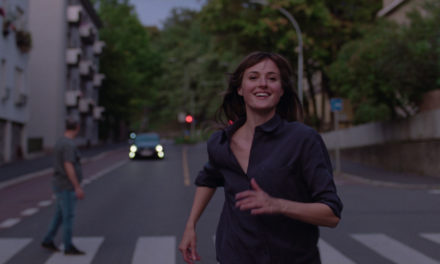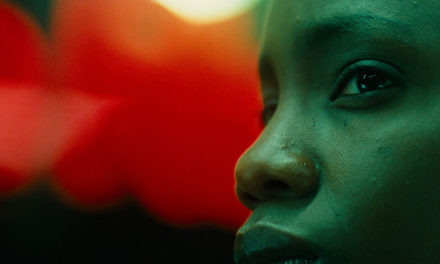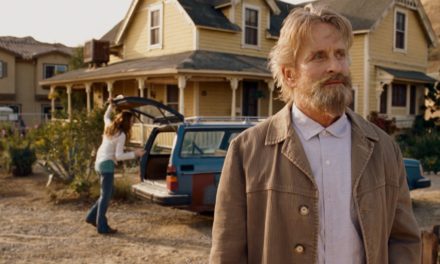THE TUESDAY DROP – 02/01
02.01.22 / New Shots
TANGERINE (2015)
TANGERINE is a 2015 comedy-drama directed by Sean Baker, starring Kitana Kiki Rodriguez, Mya Taylor and James Ransone. The films follows a transgender sex worker who discovers that her boyfriend and pimp has been cheating on her. The film premiered at the Sundance Film Festival, and became well-known for being shot on three iPhone 5S smartphones. With a budget of just $100,000 to shoot, Baker and his co-cinematographer Radium Cheung decided that shooting on the iPhone (using the FilMIC Pro app to control focus, aperture and color temperature) with an anamorphic adapter from Moondog Labs would free up budget for the film’s West Hollywood and Santa Monica Boulevard locations, as well as for paying extras.
The approach also allowed Baker and Cheung to minimize their footprint and maximize the film’s mobility and sense of movement. This approach also led them to shooting with minimal lighting gear, creating a naturalistic look for the film whose lighting choices came from choosing locations that gave them the most interesting looks they could find for the story. The approach also gave them several camera limitations, including not being able to pull focus (FilmMIC Pro would allow them to select their focus, aperture and color parameters, and then they were locked into that for the shot). This pushed them to design a visual language with a lot of lateral movements, keeping the subjects in focus but keeping a sense of motion and expansiveness throughout the film.
DOGTOOTH (2009)
DOGTOOTH is a psychological drama directed by Yorgos Lanthimos, and written by Lanthimos and Efthymis Filippou. The film follows a controlling, manipulative father (played by Christos Stergioglou), who has locked his three adult children in his sprawling family compound. As they become increasingly curious about the outside world, the oldest daughter (played by Angeliki Papoulia) starts brewing a plan to escape. Dogtooth won the Prix Un Certain Regard at the 2009 Cannes Film Festival, and was nominated for Best Foreign Language Film at the Academy Awards.
Lanthimos worked on the film with Greek cinematographer Thimios Bakatakis, who he had worked with on his debut solo feature, Kinetta (the pair would go on to collaborate on The Lobster and The Killing of a Sacred Deer). The pair settled on a style that would combine the realism of the world with the surrealism of the narrative they were telling, leading to Bakatakis’s strict, formal framing that rarely indulged in close-ups, and cool, sometimes oddly detached lighting and color choices. Lanthimos would allow the actors to sometimes improvise scenes, in order to create an oxymoronic feeling of spontaneity within the confines of the extremely strict camera work and world that the father had built around his children.
PIG (2021)
Michael Sarnoski’s feature directorial debut, PIG, follows a truffle hunter played by Nicolas Cage, who returns to Portland in order to find the person who stole his beloved pig. The film also stars Alex Wolff and Adam Arkin, and was nominated in the Best Actor category at the Critics’ Choice Awards for Cage. Pig was shot by American cinematographer Pat Scola, who was best known at the time for his work on Southside With You and Monsters and Men. Scola came on board to the project after Sarnoski saw both his independent film work and his bigger budget commercial work. The pair agreed on a look that was both grounded in naturalism but also had more stylized moments that could heighten the audience’s experiences of the environment as they followed Cage’s character.
But with just 20 days to shoot, many locations, and a production that was unable to afford a trained pig, Sarnoski and Scola had to have a flexible schedule and approach to filming that allowed them to move quickly and handle setbacks along the way. Scola shot with the Arri Alexa Mini, using lighting in a minimal way to heighten the effect of natural light and accentuate the beauty of the natural landscapes in and around Portland, where the film takes place. The result is a film that feels both intimate and mythic in quality, and was recognized as one of the most unique films of the year.
HUNGER (2008)
Steve McQueen’s feature directorial debut, HUNGER, is a historical drama focussing on the 1981 hunger strikes by Republican prisoners in Northern Ireland. The film follows Bobby Sands (played by Michael Fassbender), the first of a group of prisoners who goes on a hunger strike while jailed in the Maze Prison. Hunger premiered at the 2008 Cannes Film Festival, where it won the Caméra d’Or, and went on to win the Sydney Film Prize and two BAFTA nominations. McQueen worked on the film with British-American cinematographer Sean Bobbitt. Bobbitt and McQueen had collaborated on McQueen’s short film and video art projects, and decided on an approach of visual economy to tell the story of the film. An exact replica of the H-block cells was built outside of Belfast, down to the decision McQueen and Bobbitt made that there would be no fly-away walls, in order to give themselves, and the audience, a sense of the claustrophobia facing the prisoners.
This also dictated the 2.40:1 aspect ratio of the film, which gave the audience a heightened sense of the space the characters were occupying, as well as a trust that the camera was never placed in a geographically impossible location. Bobbitt also leant into the fact that the only light in the prison came from either overhead fluorescent lights or widows. Bobbitt placed a 20K HMI light outside windows going through a grid cloth to simulate the cold Northern Irish daylight. For night shots, Bobbitt used tungsten lights with filters that would simulate the hard yellow-sodium green lights that lit the prison. The cell lights were fittings built into the walls, with tungsten bulbs that would’ve been used in the real prison. Bobbitt and McQueen took a similarly rigorous and spare approach to shooting, with some of the film’s most memorable sequences being long, static, unbroken takes of spare and repetitive action that gave the film a sense of both claustrophobia and scale.
POETIC JUSTICE (1993)
POETIC JUSTICE is a 1993 romantic drama written and directed by John Singleton, starring Janet Jackson and Tupac Shakur. The film follows Justice (Jackson), a hairdresser grieving the murder of her boyfriend, who goes on a trip to Oakland to attend a convention with her friend Iesha (played by Regina King) and meets Iesha’s boyfriend’s friend, Lucky (played by Shakur). Maya Angeloum, who wrote the film’s poems, also appears in the film. Poetic Justice debuted at number one in the domestic box office, and was nominated in the Best Original Song category at the Academy Awards.
Singleton worked on the film with American cinematographer Peter Lyons Collister. The film was the pair’s first and only collaboration. Collister and Singleton shot large parts of the film on location between Los Angeles and Oakland, with sequences filmed on the California 1 highway along the California coastline. Collister opted for a naturalistic lighting setup per Singleton’s desire to capture the romantic story through an honest and true-to-life visual language, often extending natural sources and shaping natural light rather than using big setups to light shots. Poetic Justice has become one of the most enduring of Singleton’s filmography, and a cult hit for fans of Shakur and Jackson.
HONEYLAND (2019)
HONEYLAND is a Macedonian documentary film directed by Tamara Kotevska and Ljubomir Stefanov. It follows the life of Hatidže Muratova, a lonely beekeeper in the remote mountain village of Bekirlija, and what happens before and after neighbors move in nearby. Honeyland debuted at the 2019 Sundance Film Festival, and went on to be nominated for Academy Awards in both the Best International Feature Film and Best Documentary Feature categories (becoming the first documentary to be nominated in both categories). Kotevska and Stefanov worked with cinematographers Fejmi Daut and Samir Ljuma on the project. While the film was initially planned as a short film documenting the region, after finding Muratova, the filmmaking team ended up shooting for over three years, capturing over 400 hours of footage. With no budget, Daut and Ljuma filmed on three kinds of Nikon DSLRs, maintaining a focus on the idea of ecology to create some kind of narrative throughline in the footage they captured.
The lack of budget also helped free the crew up to get into areas they would not have otherwise been able to film – shooting inside in corners that could only fit a tripod and with light provided only by a lantern. Without any power at Muratova’s home, the crew could also only shoot for three or four days at a time, before lack of battery power would force them to return to Macedonia’s capital, Skopje, to recharge. Once the footage entered the post-production phase, Daut spent over a month trying to create a consistent look using DaVinci Resolve. However Kotevska and Stefanov preferred its more raw look, and opted to do a very basic grade using Adobe Premiere. The result is a film whose look reflects its methodology, and Honeyland has gone on to become one of the most celebrated films about ecology in recent memory.
MULAN (2020)
MULAN is a fantasy action drama directed by Niki Caro. It is a live-action adaptation of Disney’s 1998 animated film of the same name, based on the Chinese folklore story Ballad of Mulan. The film stars Liu Yifei as Mulan, as well as Donnie Yen, Tzi Ma, Jason Scott Lee, Yoson An, Ron Yuan, Gong Li and Jet Li. The film follows Hua Mulan, who masquerades as a man to take her ailing father’s place during a conscription to counter the Rouran army in Imperial China. Mulan was nominated for Best Costume Design and Best Visual Effects at the Academy Awards. The film was shot by Australian cinematographer Mandy Walker, who had worked on projects such as Hidden Figures, Jane Got a Gun and The Mountain Between Us. Walker and Caro were both interested in making a film that didn’t overly call back to the animated version.
The pair were inspired by David Lean’s epic Lawrence of Arabia in creating the look for Mulan, and worked with Panavision to use the same style of lenses that Lean used on that film. The film was shot on 70mm film, creating a cinematic, more vintage look that didn’t have an overly crisp digital presence, in spite of the heavy use of CGI. Caro and Walker created a clear visual language built around color and reflections in the film. Fight scenes were always filmed outside in bleak, almost monochromatic locations, contrasting with the colors of Mulan’s home village. Mirrors and reflective surfaces were also extensively used in the film’s production design, and Walker built the film’s visual language around the idea of reflections and identity that lie at the heart of Mulan’s personal journey.
TRADING PLACES (1983)
TRADING PLACES is a 1983 comedy directed by John Landis and starring Dan Aykroyd and Eddie Murphy. The film follows an upper-class commodities broker (Aykroyd) and a poor street hustler (Murphy) whose lives cross when they are unwittingly made the subject of a bet about who would perform better if their circumstances were swapped. Trading Places was one of the highest grossing films of the year, and was nominated for an Academy Award for Best Original Score.
Landis worked on the film with British cinematographer Robert Paynter. Paynter had worked with Landis on An American Werewolf in London, and was also known for his collaborations with Michael Winner. Landis and Paynter shot almost the entire film on location in Philadelphia and New York City. Paynter’s work on the film became a major influence for studio comedies of the 1980s, with wide lenses and softer focus dominating the visual language. Trading Places has gone on to become one of the most referenced and debated comedies of the 1980’s, and proved to be a star turn for Murphy and Aykroyd.
THE MOUNTAIN BETWEEN US (2017)
Hany Abu-Assad’s 2017 drama THE MOUNTAIN BETWEEN US (based on Charles Martin’s 2011 novel of the same name) stars Idris Elba and Kate Winslet, a surgeon and a journalist who find themselves stranded in Utah’s High Uintas Wilderness after surviving a plane crash. The film premiered at the Toronto International Film Festival. Cinematographer Mandy Walker shot The Mountain Between Us, working with Abu-Assad for the first time. Large parts of filming took place on top of the 11,000 foot Purcell Mountains in British Columbia, Canada. The crew had to drive 40 minutes to get to basecamp and be helicoptered into their filming locations, braving minus 38 degree conditions in the snow.
Abu-Assad wanted an epic, elegant look for the film in spite of the technical challenges they faced, including being unable to bring any lighting equipment. Walker opted to shoot the film on the digital 65mm Alexa, and had the grip team build a crane at 11,000 feet, slung up in a basket via helicopter, in order to shoot the grand vistas of the movie. In order to film other moving scenes, cameras were put on snowboards and Taurus tractors in order not to leave footprints, and in some scenes, Walker had up to three steadicam operators wearing white painter suits following Elba and Winslet. Winslet’s “through the ice” scene was created by building a heater water tank on location at 3,000 feet with a false plexiglass top, in order to create as much authenticity as possible to the story.
JANE GOT A GUN (2016)
JANE GOT A GUN is an American western directed by Gavin O’Connor and written by Brian Duffield, Joel Edgerton and Anthony Tambakis. The film stars Natalie Portman as Jane Hammond, a woman who asks her ex-lover for help in order to save her outlaw husband from a gang out to kill him. The film also stars Edgerton, Noah Emmerich, Rodrigo Santoro, Boyd Holbrook and Ewan McGregor, and premiered at the Almería Film Festival. O’Connor worked on Jane Got a Gun with Australian cinematographer Mandy Walker. The pair opted to shoot the movie on 35mm film in a 2.39:1 aspect ratio with Panavision anamorphic lenses, trying to both capture the period of the film as well as the sprawling New Mexico landscape in which principal photography took place. Walker gave the film a golden-yellow tint in the coloring process as a way of further accentuating the period nature of the film, as well as to communicate the harshness of the environment that the characters find themselves in both physically and psychologically.

